

























































































































R E G I O
Bay of Plenty


North Waikato Silver Fer n Events Centre, Te Aroha 28th May 2025

Awakeri Events Centre, Whakatane 29th May 2025
Northland Barge Park, Whangarei 4th June 2025
South Waikato The Plaza, Putaruru 6th June 2025
Manawatu Te Matapihi Town Hall, Bulls 17th June 2025
Taranaki
TSB Hub, Hawera 18th June 2025
Wairarapa Tui Brewery, Pahiatua 24th June 2025
Mid Canterbury Ashburton Hotel 26th June 2025
North Canterbury Amuri School Hall, Culverden 1st July 2025
Southland Town & Country Club, Gore 8th July 2025
West Coast Shanty Town Events Centre, Greymouth 15th July 2025

















































































Gerald Piddock NEWS Property
RENEWED confidence in the dairy industry has seen first farm buyers making inroads in the rural property market.
They are making up a considerable portion of farm purchases in Waikato, ANZ senior manager Rhys Wylie said during a presentation about agri-trends at DairyNZ’s Dairy Sector Outlook: 2025-26 and Beyond event near Mystery Creek.
“We are seeing first farm buyers come to the market. Over the last three years, we have supported 35 first farm buyers into the market.”
While some managed to achieve it through family support, a good portion did it themselves, he said – “generally, through investment off farm, capital sell-down or large-scale sharemilking and then buying their first farm”.
The Real Estate Institute of NZ does not collect nationwide data on first farm buyers, which makes it hard to know what percentage of farm sales they make up, its rural spokesperson Shane O’Brien said.
While first farm purchases are occurring, they tend to be regioncentric, particularly Waikato and Taranaki, where farms are smaller and less capital is needed.
“We are definitely seeing first farm buyers in the market. I wouldn’t say there is more of them
across New Zealand than before.”
Many of these buyers are being supported as part of an equity partnership.
“We are probably seeing a number of equity partnerships coming back into the market that we haven’t seen for a while and those equity partnerships usually involve first farm buyers,” he said.
There was also strong inquiry across the board for dairy farms, including first farm buyers, due to renewed confidence in the sector thanks to the high payout, strong balance sheets and falling interest rates.
Over the last three years, we have supported 35 first farm buyers into the market.
Rhys Wylie ANZ
Seeing those first farm buyers active in the market is part of that renewed confidence.
In Canterbury and Southland, the buyers tend to be local and are farmers looking to expand.
There are also some sharemilkers looking at stepping up into farm ownership, O’Brien said.
There were a strong number of sales on the West Coast, a region
Continued page 3

Claims that foresters are scheming to work around new afforestation restrictions are not correct, says Woodville nurseryman Patrick Murray. He grows about 17 million seedlings but could have sold another 7 million, such has been the recent interest.
NEWS 7
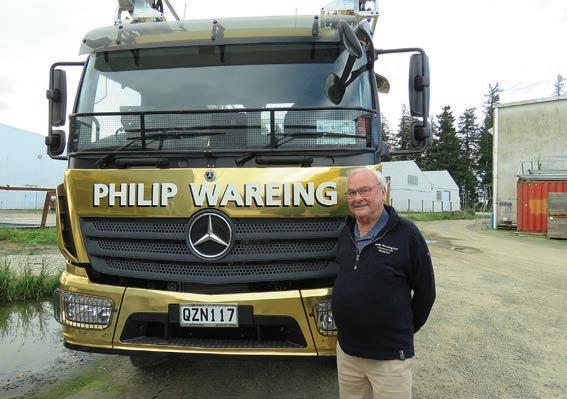
OSPRI takes a second run at developing software platform.
NEWS 3
Photo: Bryan Gibson
After 50 years up front, Methven’s Phil Wareing is taking a back seat in the rural transport business he built.
PEOPLE 10
Optimism over Taiwan’s prospects for New Zealand producers.
NEWS 4
Photo: Annette Scott
Results question meat processing needs, says Allan Barber.
OPINION 15



Bryan Gibson | 06 323 1519
Managing Editor bryan.gibson@agrihq.co.nz
Craig Page | 03 470 2469
Deputy Editor craig.page@agrihq.co.nz
Claire Robertson
Sub-Editor claire.robertson@agrihq.co.nz
Neal Wallace | 03 474 9240
Journalist neal.wallace@agrihq.co.nz
Gerald Piddock | 027 486 8346
Journalist gerald.piddock@agrihq.co.nz
Annette Scott | 021 908 400
Journalist annette.scott@agrihq.co.nz
Hugh Stringleman | 027 474 4003
Journalist hugh.stringleman@agrihq.co.nz
Richard Rennie | 027 475 4256
Journalist richard.rennie@agrihq.co.nz
Nigel Stirling | 021 136 5570
Journalist nigel.g.stirling@gmail.com
Lana Kieselbach | 027 739 4295 production@agrihq.co.nz
ADVERTISING MATERIAL
Supply to: adcopy@agrihq.co.nz
SUBSCRIPTIONS & DELIVERY 0800 85 25 80 subs@agrihq.co.nz
PRINTER
Printed by NZME
Delivered by Reach Media Ltd
Andy Whitson | 027 626 2269
Sales & Marketing Manager andy.whitson@agrihq.co.nz
Janine Aish | 027 300 5990
Auckland/Northland Partnership Manager janine.aish@agrihq.co.nz
Jody Anderson | 027 474 6094
Waikato/Bay of Plenty Partnership Manager jody.anderson@agrihq.co.nz
Palak Arora | 027 474 6095
Lower North Island Partnership Manager palak.arora@agrihq.co.nz
Andy Whitson | 027 626 2269
South Island Partnership Manager andy.whitson@agrihq.co.nz
Julie Hill | 027 705 7181
Marketplace Partnership Manager classifieds@agrihq.co.nz
Andrea Mansfield | 027 602 4925 National Livestock Manager livestock@agrihq.co.nz
Real Estate | 0800 85 25 80 realestate@agrihq.co.nz
Word Only Advertising | 0800 85 25 80 Marketplace wordads@agrihq.co.nz
Dean and Cushla Williamson Phone: 027 323 9407 dean.williamson@agrihq.co.nz cushla.williamson@agrihq.co.nz
Farmers Weekly is Published by AgriHQ PO Box 529, Feilding 4740, New Zealand Phone: 0800 85 25 80 Website: www.farmersweekly.co.nz
ISSN 2463-6002 (Print) ISSN 2463-6010 (Online)

Fonterra’s share price has risen and the discount to the shareholders’ fund units narrowed in expectation of a shareholder capital return from the potential sale of Mainland Group.
FCG shares are $4.59 currently, close to double their price a year ago, while FSF units have risen steadily to $6.18, which is 75% higher than in May 2024.
A manufacturing issue has created a temporary shortage of the salmonella vaccine Salvexin+B.
MSD Animal Health says it is currently out of stock but anticipates having fresh product available early next month. DairyNZ says there are 100 cases of salmonella in dairy cows in Otago and Southland, which has been accentuated by the unavailability of the vaccine.
Bremworth has announced a return to making a limited range of synthetic carpets, five years after going to a wool-only policy. The company said the reintroduction of synthetics next financial year will be in response to feedback from major partners and will allow improved factory utilisation at its Auckland site. No new capital expenditure is required and there will be a minor increase in staff members.
AgriZeroNZ is investing $1.5 million into Australian start-up company Bovotica, which is developing technology to reduce methane emissions in cattle and boost production.
AgriZeroNZ is a public-private New Zealand partnership that invests in innovative companies around the world developing technology that reduces methane and nitrous oxide emissions in NZ pastural farming systems. Bovotica researchers have identified microbes that naturally occur in the rumen of low methane-emitting cattle.


Richard Rennie TECHNOLOGY Disease
OSPRI’s CEO is assuring farmers and shareholders there will be no repeat of its previous software debacle as it has a second attempt at integrating and upgrading its technology platform.
Last year the disease management agency had to write off over $16 million after a botched effort to better integrate NAIT data and other systems under the MyOSPRI project.
Soon after he was appointed, CEO Sam McIvor was prompted to pull the pin on the project, writing off the investment.
Further fallout prompted the resignation of OSPRI’s chair as a report highlighted a lack of board oversight on the project.
An independent review of OSPRI’s governance framework also revealed weaknesses in governance. Three new shareholder directors were appointed, including one representing DairyNZ and one for Beef + Lamb New Zealand.
“The first step in the process is to issue a Request for Information (RFI),” McIvor said.
Continued from page 1
known for being a place where first farm purchases occur.
The other major trend Wylie saw was the reduction in agridebt. It is at the lowest it has been since 2018.
“We peaked in July 2018 at $42 billion and now in March ... we’re down to $35bn – so basically, we have paid off $7bn in a really short space of time.
“The sector’s matured and I think it’s important to acknowledge that the access to capital is strong.”
On a kilograms of milk solids

This gives tech providers the opportunity to offer information about their products and solutions for the upgrade, and went live on May 16.
“It could be anything from an off-the-shelf software system to a custom build.
basis, it has fallen from $22/kg milk solids to $18.50/kg MS by the end of this season, he said.
“It’s a significant reduction.”
In March there was a debt reduction of $273 million across New Zealand among dairy farmers. On aggregates, that equated to $1.7bn of debt paid off for the season, he said.
“In context, that’s 90 cents a kilogram of milk.”
Among the bank’s own dairy farmer customers, only around 15% are using working capital and overdraft facilities, an indication that liquidity is strong.
UPGRADE: OSPRI
CEO Sam McIvor is confident the disease tracking agency will achieve its upgrade and integration programme without the cost overruns and complexities of its first, inhouse attempt.
“We do not have a predestined idea on what the solution is.”
Learning that inhouse software development was not OSPRI’s strength was the first assurance McIvor offered the sector that there would not be a repeat of the last effort.
McIvor said first and foremost OSPRI is a specialist in disease management and tracing, and more of a data company than a technology company. The tech expertise to create a better platform was better sought externally.
“We have been really obsessed with getting all the business process information, all the requirement details so when an outside party looks at this it is very, very clear on what they need to do.
“That includes a lot of legal requirements. We have to meet the legislation, through to business process requirements and integration with other technologies outside OSPRI.”
Guardrails to avoid a second cost overrun have come through from the earlier review.
“There’s been quite a bit of change on the board. The second thing is we have put quite a bit more governance discipline around the process.
“As an OSPRI team we now have very clear protocols on how our projects will be run. The board has put in a technology committee that meets on at least a monthly basis.
“We also have an independent
external adviser who sits between management and the board.
“We are really confident we have the right processes and governance around this project.”
A change to OSPRI’s constitution has also ensured shareholders have to sign off on board director appointments.
We are really confident we have the right processes and governance around this project.
Sam McIvor OSPRI
McIvor freely acknowledged the frustrations farmers have had when interfacing with OSPRI over the years, and said it is a key focus to fix.
“It is well known, no secrets there, and from day one it has been an issue.
“Our data accuracy and volume has been increasing over time but we do know it is a major constraint.”
The tendering process means OSPRI is confident it will have selected a preferred provider by year’s end.

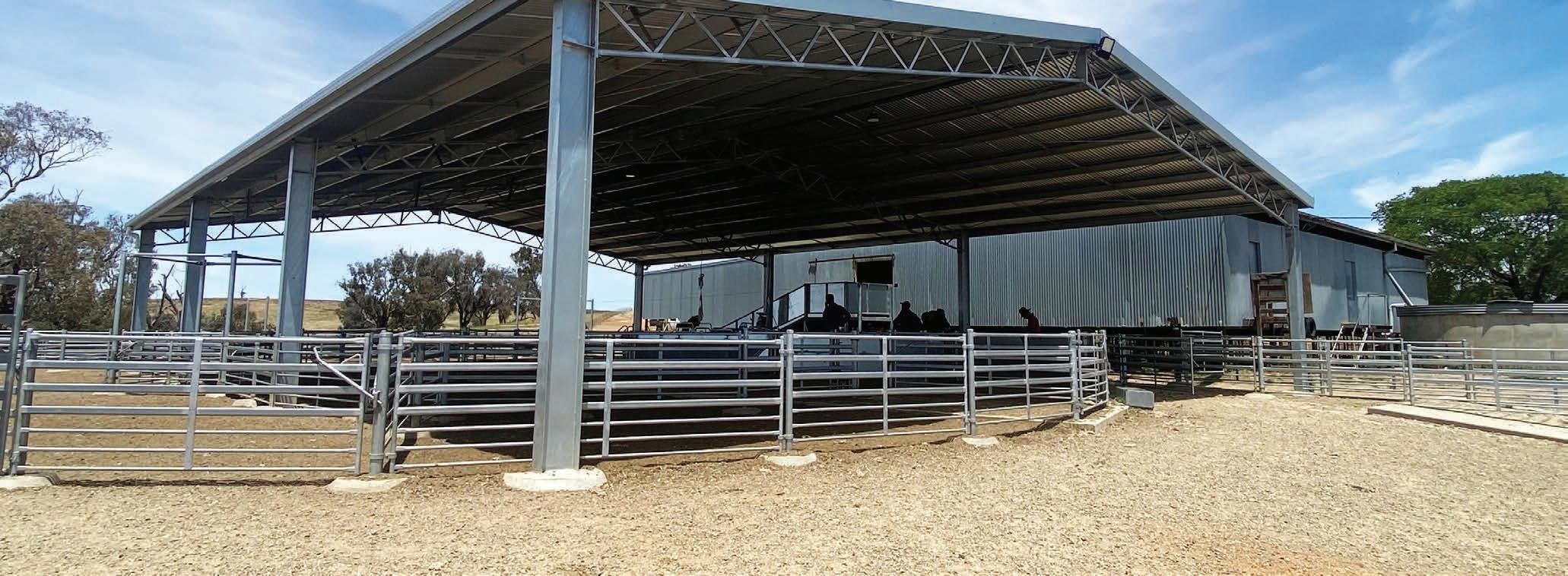





Rennie MARKETS Trade
ARECENT cross-party visit by New Zealand
MPs to Taiwan bought attention to a country whose capacity as a high value export market outstrips its size, when compared to most southeast Asian markets.
Under New Zealand’s One China policy, Taiwan is not recognised as an independent country. China’s claim to Taiwan is acknowledged by NZ, while NZ’s government is careful not to take a position on the merits of that claim.
Meantime, since the signing of a free trade agreement in 2013, the Agreement between New Zealand and the Separate Customs Territory of Taiwan, Penghu, Kinmen and Matsu on Economic Co-operation (ANZTEC), trade with the island nation has flourished.
Taiwan’s application to join the Comprehensive and Progressive
Agreement for Trans-Pacific Partnership, which New Zealand is a member of, could further enhance trade relations.
Growth has come despite the absence of formal diplomatic ties (NZ has no formal embassy in Taiwan) and annual exports to December 2024 total $1.8 billion.
This makes Taiwan NZ’s sixth largest export market, despite having a population of only 23.4 million.
I would regard Taiwan as quite a discerning market.
Charles
Finny
Trade expert
Those exports fall predominately in the dairy, fruit and meat sectors.
Geographically, Taiwan is a similar size to Southland, with a vast forested national park area occupying over three-quarters of the country, and the bulk of its population limited to a 40km wide coastal strip down its 300km western seaboard.
Long-time trade negotiator and diplomat Charles Finny was

instrumental in negotiating and compiling the ANZTEC free trade agreement. More than 10 years on, he describes the FTA as a robust agreement that has held up well – something rare in the global trading environment.
“It would be very difficult if not impossible to achieve such an agreement now,” Finny said.
“I would regard Taiwan as quite a discerning market. It was ruled by Japan for many years and there are significant similarities between the two countries. Taiwanese are very discerning about their fruit and vegetables, how they are displayed and purchased.”
At 115kg of fresh fruit eaten per capita a year, consumption sits near the top globally with temperate fruits like cherries, kiwifruit and apples holding strong appeal. Apples are the largest imported fruit category by volume into Taiwan and NZ the largest southern hemisphere exporter.
T&G Global has just announced it is opening a Taipei-based office in June, based on the company’s success with its premium Envy apple brand. The company has had 25% year-on-year growth in apple volume sales there.
“We will be able to connect with more consumer and further grow demand for Envy and in coming years for our new premium Joli brand,” said Shange Kingston, T&G’s chief operating officer for apples.
Zespri has also enjoyed strong year-on-year growth in Taiwan, selling over 8 million trays in 2024 as a portion of the 54 million sold across greater China.
An increasing emphasis on nutrition and holistic wellness in Taiwan has helped Zespri capture market gains for green fruit in particular, which carries a gut health benefit claim.
A more recent high volume, high value fruit arrival from NZ has been cherries, with Taiwan forming the single largest export market and accounting for almost



half the sales for the February 2025 season, with total exports up a third on the year before.
Taiwan sits well ahead of the next most significant market, China, which accounts for 15% of export sales.
Taiwanese demand has been largely responsible for the sector’s remarkable growth, with export volumes nearly six times those of 20 years ago and export values 12 times greater.
Following the likes of South Korea, beef demand has surged in Taiwan in recent years, with an average per capita consumption of 7kg double what it was 15 years ago. Limited local production means over 90% of beef is imported, largely from the United States and Australia.
NZ’s beef exports are valued around $200 million, accounting
for about 22,000 tonnes in 2022, into a market that consistently paid as much as a 50% premium above the global average for chilled product.
Greater awareness of grass-fed, low-fat red meat’s health value and ongoing demand for dining out have reinforced the ongoing value to companies including Silver Fern Farms and Alliance. Finny remains highly optimistic about Taiwan’s prospects as a trade partner.
“It is a market that can be bigger than the UK some years, and it has a population similar to Australia, in close proximity to us.”
• Rennie is visiting Taiwan as part of the Farmers Weekly Meeting the Markets project, with funding from the Asia New Zealand Foundation Te Whītau Tūhono.




Richard Rennie NEWS Forestry
GISBORNE forest owners are outraged at the district council’s latest consent conditions on forest harvesting – regulations they say will drain the region of forestry businesses.
In response to the post-Gabrielle ministerial inquiry into land use, Gisborne District Council (GDC) has formulated new standards for forestry operations, including tighter controls on harvesting, skid site management and replanting.
But Eastland Wood Council chair Julian Kohn said the standards have not gone down well with foresters. They accuse the council of significant regulatory overreach, threatening current and future investment in the region’s vital forestry sector. His concerns come after Gisborne mayor Rehette Stoltz cited closer collaboration between council and forestry earlier this year, with parties moving towards smoother land use transition in the region.
“But there are half a dozen consent conditions there we were not agreeing on, and we were very unhappy about, that in many cases would stop the industry in its tracks,” said Kohn.
The key area of concern is new regulations around water quality and discharge from beyond the forest boundary.
“In broad terms it is about how the forester manages sediment and woody debris, effectively saying you cannot emit any debris beyond the forest’s boundary.”
Foresters’ issues include the near impossibility of guaranteeing any debris loss from site and
regulatory expectations that water clarity be retained, even after storm events.
They cite the undue focus on forestry when farming also contributes to the region’s significant sediment flows.
Kohn agreed that some of the requirements, including more robust skid sites, were valid, if onerous, in an area of management that had not been up to standard in the past.
But he said given the 25-plus year time frames foresters worked to, the council consents were very much focused on the short term, and based on immediate water quality outcomes.
They fail to recognise that foresters’ desire to shift forest planting and management in response to land use changes could only occur within that long term time frame.
GDC director of sustainable futures Jocelyne Allen said in a written response to Farmers Weekly that the council understands the concerns raised by foresters, particularly around operational flexibility and longterm transition in land use.
“It is also our duty to ensure that the environmental effects of existing activities are appropriately managed. In some cases, this means placing firmer controls where risks to life, property and ecosystems are elevated.”
She said the council is open to constructive dialogue with industry partners on specific conditions.
“If foresters have concerns, they are encouraged to engage formally with us.
“That said, any amendment to conditions must still comply with the [Resource Management Act], and any variation would need to be supported by updated assessments
of environmental effects and evidence that the changes do not result in unacceptable risks to downstream communities or the environment.”
But a forestry insider told Farmers Weekly foresters feel betrayed by a council that had already outwardly consulted with them, then “went and did their own thing anyway”.
He said with multiple enforcement orders already in place on forestry companies, it was impossible to find independent directors for companies operating

CONTROLS: Gisborne District Council has formulated new standards for forestry operations, including tighter controls on harvesting, skid site management and replanting.
on the coast, given the fiduciary risk they faced if the company was prosecuted.
“And these consent conditions only make that risk even greater.”
Kohn said the concern was that


ANZCO Foods made a reduced net profit before tax in 2024 of $13.5 million compared with $60.9m in 2023.
In the year ended December 31 the company had a turnover of $1.85 billion, slightly larger than the year before.
Chief executive Peter Conley said lower market returns, especially during the main processing season, squeezed margins and impacted business performance.
“Global market pricing for beef and lamb improved in the second half of the year with increased consumer demand in key markets but China had slower economic activity and this reduced demand impacted beef and sheepmeat returns,” he said.
On the positive side, all plants were fully staffed and the value-added products in
the restrictive conditions would spill over into other parts of NZ, running ahead of any proposed changes to the RMA.

food manufacturing, health care and bioscience performed well, although raw material costs were higher.
Capital projects in 2024 included the Canterbury beef packing room, lamb loin robotics at Rangitīkei, and a boning room upgrade at Marlborough.
The 2025 outlook has geopolitical tensions and tariff implications.
“However, the underlying outlook for beef and lamb is positive with improving economic conditions driving increased demand amid global supply constraints,” Conley said
MORE: See page 15
This week’s poll question:
Do you think our meat processing industry is set up to be profitable in its current form?
Have your say at farmersweekly.co.nz/poll



MORE money for science, roading, health, school buses and to attract teachers are on the wish list of rural leaders ahead of next week’s Budget.
Rural Women NZ president Sandra Matthews said from an economic and personal wellbeing perspective, rural communities are often the nation’s poor cousin.
She said this is evident in the state of rural roads, access to school buses and attracting teachers and health professionals, which are all in need of more funding.
School bus services require a minimum of eight eligible pupils but families in some communities have left due to afforestation, leading to reduced bus services.
“A lot of routes have terminated, shortened or merged, meaning students take longer getting to school.”
She would also like to see schemes introduced to attract principals, teachers and health professionals to work in rural communities and to restore degraded rural roads to ensure the rural economy functions.
The Budget needs to address funding for roads of national significance, chair of Transporting New Zealand Cameron Bagrie said.
“It is all very well declaring these priority roads, but who is going to pay for it?” he said.
“Secondly, the road maintenance budget is insufficient to cover depreciation.
“Thirdly, any initiative that will increase productivity will be very welcome.”
In the recent Transporting NZ annual survey, concerns about the state of roads were nearly universal.
NZ Association of Scientists co-head Troy Baisden said the sector has “very low expectations” for the Budget, despite government reforms of the sector without providing new funding.
New Public Research Organisations are

being formed, into which the current Crown Research Institutes will be merged.
“What I’d like to see is the government committing to getting new structures and sensible priorities set, with indications of funding coming in future years.”
A report last August by Sir Peter Gluckman’s Science System Advisory Group noted underinvestment and mis-structuring of research, which led to poor economic growth and productivity.
“But the government has not actually taken up the group’s recommendations coherently as yet.”
He said funding of core public research should be restored to inflation adjusted 2019 levels, which is about $300 million more than a zero budget, but needed to retain its functions.
“In this longer term, it is critical to raise core public research funding to 0.6% of GDP over five years.”
Baisden wants funding for major clusters of national interest for the primary industry to address threats from climate, hazards and biosecurity and to maintain and restore productivity gains in pastoral farming and prove product value and environmental performance for international markets.

Stringleman
MENTAL health and wellbeing for farmers and primary care staffing in rural areas should be priorities for Budget 25 funding, Federated Farmers president Wayne Langford says.

PRIORITY: Biosecurity funding and manning is a high priority for farmers, says Federated Farmers president Wayne Langford.
“We have submitted strategies to both the previous government and the present government on these matters and we want to see adoption in this Budget.
“Rural people are the second-largest group in society after Auckland residents and must be looked after adequately.”
Langford said there are two sides to a Budget and the primary sector is a very large contributor to government revenue.
“We want to be able to get on with doubling exports as the government projects, and we need it to remove some of the costs of farming.”
Resource Management Act reform and freshwater farm planning are two chunky regulatory areas where Langford is prepared to give the government credit for willingness and progress.
“The government has looked to take out as much regulatory cost as possible, which is what we asked for.”
He said the productivity growth expected from the sector must be underpinned by strong agricultural science and efficient routes to market for new agri chemicals.
Biosecurity funding and manning is a high priority for farmers and Langford said the government keeps making assurances that is properly resourced.

Neal Wallace NEWS Forestry
FORESTRY investors have not stockpiled exotic tree seedlings to avoid pending government changes to land use regulations.
Uncertainty over the government’s intention to restrict wholefarm conversions to forestry based on land use classification (LUC) reduced nationwide demand for seedlings from about 130 to 135 million nationwide for each of the last few years, to between 80 to 90 million last spring.
Farming groups claim forestry investors pre-ordered seedlings for planting this season to be exempt from those new land use restrictions, which the policy permits.
But seedling stocks indicate that is not the case.
Patrick Murray of Murrays Nurseries in Woodville said seedlings are grown under contract, and uncertainty over the pending policy significantly curbed last year’s demand nationwide.
“I am not aware of any speculative crop orders, which is probably a consequence of not knowing what land use rules will be,” said Murray.
“All the seedlings we have are to be planted.”
Murray grows about 17 million seedlings but could have sold another 7 million, such has been the level of inquiry in recent months.
That contrasts with what he calls “non-existent” inquiry for seedlings for the 2026 planting season.
He estimates 60 to 70 million could be sown this spring, potentially about half the volume grown several years ago.
He knows of two nurseries closing and another ceasing production of seedlings.
The government has introduced legislation placing a moratorium on full farm afforestation on actively farmed properties with a LUC of 1-5, but allows planting of up to 25% of LUC 1-6.
It also limits to 15,000 hectares the area of forestry on LUC 6 entering the Emissions Trading Scheme (ETS).
Murray said how the 15,000ha limit will be regulated and allocated is a major concern for foresters and a disincentive for investors.
“Five months out [from the seedling planting] deadline and we have no direction with how it is going to go.”
The policy will take effect from December 4 last year, the date the policy intent was announced.
Agriculture and Forestry Minister

I am not aware of any speculative crop orders.
Todd McClay said the government is concerned about the effect of farm conversions, particularly sheep and beef farms in Northland, the east coast and Otago and Southland.
Federated Farmers welcomed a
halt to the locking up of what it called “high-quality farmland into carbon forests”.
Forest Owners Association chief executive Elizabeth Hegg describes LUC 6 as forestry’s sweet spot.
Land above LUC 6 is riskier and the economics marginal.
The 2023 Ministry of Primary Industry’s afforestation intentions survey, the latest data available, shows 68,500ha was planted compared to 88,000ha in 2022.
Nearly three-quarters of exotic afforestation from 2019 to 2023
was in the North Island and 40% of total afforestation was in the east coast, Hawke’s Bay and the southern east coast of the North Island.
The government provided transitional measures for those landowners in the process of afforestation prior to last December’s announcement.
They include securing land or a forestry right, the ordering of seedlings, site preparation or undertaking due diligence for afforestation.

MORE than 1500 people received help from the Rural Support Trust last year, with 51% of cases requiring additional specialist support, according to a recently released report.
In 2024, Rural Support had over 1500 people contact them for support, with around 51% of cases also requiring additional specialist support networks.
“Our important role as a connector means our teams nationwide are widening their networks all the time to ensure suitable connections are readily available to support our farmers and growers. As the need for our support increases, a large part of our work is making sure our Rural Support team can support the demand while building connections in the wider support needed.” Staff reporter
The trust’s social impact report, supported by Fonterra and conducted by the Ākina Foundation, also showed that for every $1 invested into the delivery of Rural Support services, a social value of $4.60-$5.50 is created.
National chair Michelle Ruddell said the report outlines the positive outcomes and achievements Rural Support delivers to rural communities.
“Our purpose is to empower primary producers, their families and our rural communities with the support, tools and networks necessary to foster social connection and build business and personal resilience.
“I am proud of the work Rural Support has achieved, and this report validates and proves the ongoing impact that we have.”
Results from an anonymous survey found 94% of those who engaged with Rural Support felt less stress and on average a client’s mental wellbeing improved by 5.4 points on a 10-point scale. At the same time, 84% of those who had previously engaged with Rural Support had more knowledge about where to find external support when they needed it.
Ruddell said while it is good to see such a positive impact on a person’s wellbeing through their involvement with Rural Support, it is concerning that an improvement of 5.4 points means that many were getting into some dark places before reaching out for help.
“Our ongoing work in destigmatising mental health challenges and normalising asking for help is critical to building strengthened rural communities. We want people to feel comfortable to reach out early before things feel out of control and we’re here to support regardless of the situation.”
Ruddell said the increasing
complexity of cases means Rural Support is often assisting people for a much longer period of time.


Gerald Piddock NEWS Dairy
THE average payout dairy farmers will receive in the new milking season will lift, though expenses will still remain high, DairyNZ says. Farmers are forecast to receive $10.13/kg MS for the 2025-2026 season compared to $10.04/ kg MS for this season, DairyNZ economist Mark Storey told a group of farmers and industry professionals at the Dairy Sector
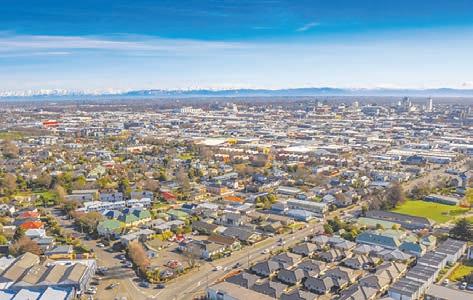
Outlook: 2025-26 and Beyond event near Mystery Creek.
The average payout received is the income over the course of the season and calculated using both the previous season’s retro payments as well as advanced payments for the current season and dividends.
“The story is, though, for the second season in a row, that it’s above $10,” he said.
Farm working expenses are still increasing, lifting from $5.81-$5.94/kg MS for the new season.

Combined with other expenses, it amounts to a break-even amount of $8.57/kg MS, the income required to cover costs such as working expenses, interest, drawings and tax.
The milk price is going to have to be high to cover those expenses, Storey said.
“Those expenses and break even does not allow for repayment of principal or capital expenditure.
“There’s more money to come out of farmers’ pockets even when you get to that figure.”



WAIKATO equity partners and contract milkers
Thomas and Fiona Langford’s all-round excellence saw them win the New Zealand Share Farmer of the Year Award at the New Zealand Dairy Industry Awards.
The first-time entrants work for Fiona’s parents, Marian and Jos van Loon, on their 262 hectare,1090-cow farm near Putāruru.
They run a split calving system. Next season they are taking on a second contract milking job, milking 870 cows on the neighbouring farm, which is also owned by the Van Loons.
Also winning awards were Martin Keegan from Taranaki, who was named the 2025 New Zealand Dairy Manager of the Year and Pieter van Beek from Hawke’s Bay/ Wairarapa, who was announced the 2025 New Zealand Dairy Trainee of the Year.
The awards were held at Mt Maunganui’s Baypark Stadium in front of more than 620 people.

The Langfords also won the CowManager Experience cow monitoring system for two years, while Waka Dairies from Hawke’s Bay/Wairarapa were the recipients of the Fonterra Responsible Dairying Award.
This year, two new awards were introduced – the Fonterra and ASB First Farm Award and the ASB Alumni of the Year Award – to celebrate and reward those continuing to contribute to the dairy industry.
Coming from an efficiency background, it was really important for us to be as productive as possible on farm.
Thomas Langford Share farmer of the year
Braden and Brigitte Barnes (Canterbury/North Otago), Cameron and Margaret Bierre (Waikato) and Reece and Natasha Cox (Central Plateau) each received the Fonterra First Farm Award, with Steve and Amy Gillies from Waikato winning the ASB Alumni of the Year award.
Thomas Langford said the award, along with the seven merit awards they had won throughout the night and come as a huge surprise.
“We’re absolutely overwhelmed,” Fiona said.
Thomas said they were particularly proud of winning the business performance and environmental sustainability merit awards because of the importance they place on both in their farm business.
Both put their success down to their corporate backgrounds.
Fiona holds a Master’s in Dietetics and Tom a Bachelor of Food Science (Hons). They both began work in the Fonterra technical graduate programme, with Fiona moving to Melbourne to work in the nutritionals team and Thomas working with the Fonterra nutrient management team.
Both have a Master’s in Dairy Science and Technology, which they completed during their time in the Fonterra programme.
That background meant they were late starters into dairy farming, with 33-year-old Thomas and 34-year-old Fiona starting in 2019 and 2017 respectively.
“When we started our career in

farming, we had a lot of those soft skills – administrating, financial discipline, setting budgets and managing budgets,” they said.
These skills transferred well to running a farm business, Fiona said.
That background also gave them an appreciation of the capital Fonterra invests in processing milk, Thomas said.
“Coming from an efficiency background, it was really important for us to be as productive as possible on farm and to drive efficiencies.”
Share Farmer category head judge Steve Canton from DairyNZ said they impressed the judges


with their overall excellence across the board.
“Tom and Fiona are very focused on the detail. They both come from corporate lives and they have brought that experience into a lot of their systems and processes.”
The judges noted that the couple are constantly looking to learn and have very strong awareness around the financial aspects of their business.
The Langfords are involved in several roles in the community, including Putaruru Athletics Club, Puketurua Hall Committee, Putaruru Rangers FC, South Waikato Environment Initiative, their local playcentre and Te Waotu SSG.








IT HAS been a long haul, but Methven businessman Philip Wareing is proud of what he has achieved and the business he established for his family as he looks forward to taking a back seat.
PWL (Philip Wareing Limited) is a family-owned and -managed transport company that began life as a spraying contracting business in 1975 and this year celebrates 50 years as one of the largest rural transport companies in the country.
In what was intended to be a stepping stone towards his goal of owning a farm, Wareing by default established a business now employing 317 staff and operating 275 trucks.
“I’m proud of the family in business with me, if not I probably wouldn’t be running it still. Well, I’m not meant to be, I’m supposed to be in the background these days,” he said.
Wareing left school at 15 determined to work on a farm for two years before going on to Lincoln College.
After two years he decided to give academia a miss, asked if there were any jobs going at Pyne Gould Guinness and was immediately employed as a
trainee. He eventually became a grain agent.
In 1970 he married Wendy, and the same year was transferred to Rakaia as the sole PGG grain agent. Four years later he was transferred to Methven, the town that has since become home for the Wareing family.
While working as an agent, he grew potatoes to earn some extra money and this earned the $15,000 needed to buy the first business in 1975, an agricultural spraying business comprising one J1 Bedford truck. So began Philip Wareing Ltd.
Transport, Christchurch-based NZ Express Transport and Transwest Freighters based in Greymouth. The family business now runs seven companies across the South Island.
“We have a number of loyal staff who have remained with us for several decades as well as many of the original clients who still use and recommend us today.”
PWL is known for its modern fleet, which is well maintained in its own workshop with full-time engineers and mechanics.
Fairfield Freight Hub is a new concept incorporating a rail siding based near Ashburton.
The Wareings’ three children work in the business: Mark and Simon as joint CEOs overseeing all transport companies and the Fairton freight hub, and Rachel as HR support working for all companies.

the shearer’s quarters into a self-catering lodge has added agritourism, offering guests fishing, hiking, mountain biking and four-wheel driving.
and the business. We believe that a strong and vibrant community benefits everyone, and we are dedicated to making a positive impact.
The idea was to make enough money from the business to fulfill his lifetime dream of owning a farm, but before the farm there were more business ventures.
In 1985 he bought a logging truck business off the local sawmill followed by a couple more trucking businesses, and down the track purchased two high-country sheep stations, a timber business and over the years several transport companies including Ashburtonbased Rural Transport Ltd, Wilson Bulk Transport, Mayfield
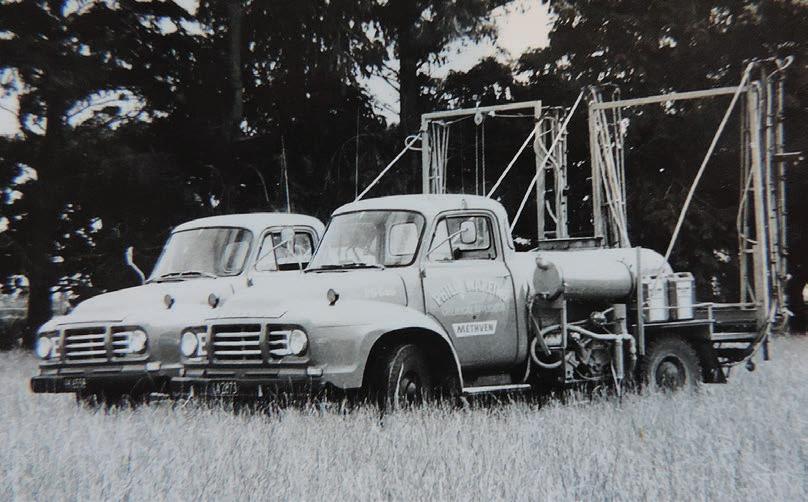
The Wareing business portfolio includes all aspects of road transport – livestock, bulk grain, logging, containers, general freight as well as spraying, fertiliser spreading, the Fairton freight hub and Philip’s beloved high-country farm, the 9000 hectare Arrowsmith Station in the Ashburton high country.
The “farmer goal” was reached in 1997, and the Wareings now employs a farm manager to run Merino sheep, Angus cattle and red deer. Renovation of
For a short time Wareing also owned nearby Big Ben Station but sold that in 2009 to purchase land and establish a commercial premise at Rolleston.
A former Methven Community Board chair and Mt Hutt Memorial Hall chair, Wareing is well known in the community for his support and sponsorship of local sport and activities. He was awarded Member of the New Zealand Order of Merit in 2012.
“The community has always been important to me, my family


Richard Rennie NEWS Horticulture
MĀORI ownership and participation in the horticultural sector has surged by over a third in the past eight years, despite an overall decline in total horticultural area farmed in New Zealand.
A report commissioned by Horticulture New Zealand shows total NZ horticultural land area declined by 9% in the past 20 years, but despite that the area of Māori owned land in horticulture lifted from about 4000 hectares in 2002 to 5100ha in 2024.
The greatest gains in land area have come only in the past three
years with the greatest land area in kiwifruit at 2023ha or 12% of the country’s total kiwifruit area.
The next most predominant crop is onions, or which iwi account for 10% of the total, or 477ha.
“Other” horticultural activity that includes the likes of berries and nuts accounts for 2255ha, or 9% of that total area.
The area Māori have committed to horticulture remains a small percentage of total Māori land involved in the primary sector.
Of the 536,000ha of Māori land in primary production, grass still accounts for two-thirds of it, the rest being forestry and only 1% horticultural.
The gains are being celebrated by Hort NZ’s CEO Kate Scott.
She said a key priority in the sector’s industry plan is to grow the portion of Māori land engaged in high value horticulture.
“While horticulture comprises a small proportion of Māori-owned land, involvement in horticulture is diverse and expanding, from Māori individuals and businesses to iwi and their commercial arms,” she said.
Total value of the crops produced is estimated at about a third of a billion dollars with kiwifruit accounting for $230 million in 2024. Onions account for about $15m income and “other” $43m.
The operations provide employment for about 4000 Māori out of the sector’s total jobs of 24,000, meaning iwi are
proportionately represented compared to their share of the population in NZ.
Māori do, however, have a disproportionate share of the sector’s low skilled jobs, with 70% of Māori in “low skill” job classes for horticulture, compared to 49% non-Māori.
Ongoing and future projects include a number funded by the Provincial Growth Fund involving tangata whenua, amounting to 750ha in a mix of completed and contracted projects.
“As horticulture presents significant benefits in terms of economic development, a number of Māori entities intend to develop pastoral land into horticulture,” Scott said.
“We understand the importance of giving back and are proud to be a part of our community.”
PWL supports more than 30 Canterbury sports clubs, charitable organisations, and community events.
“The whole idea of the going into business was to get into farming; 50 years later it just sort of happened. I look at my trucks now and I feel quite proud; 12 trucks at the recent Tekapō sale and nine of ours.
“I thought well, we’ve made it.”
A business that started with not much, a few tough times and a businessman that took more than a few risks over the years, now a family together in business.
“The future is a case of survival. Last financial year I said I’ll be happy if we break even and we did. The next 12 months will be the same.
“The legacy should be to operate honestly with integrity, give it their best endeavours and just carry on.
“I’m very proud of what I started, now with family, and grandchildren coming along too.
“I am happy.”
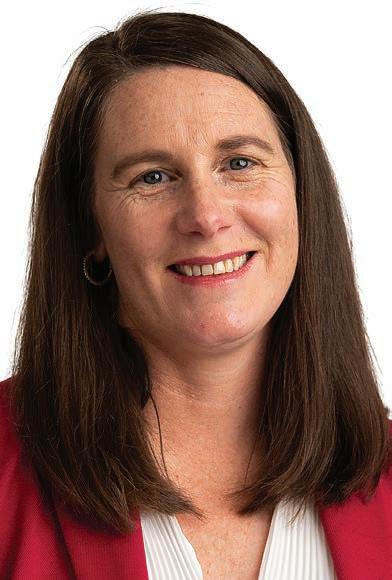
OPPORTUNITIES: HortNZ CEO Kate Scott says iwi continue to find new opportunities for horticulture in a sector where total land area committed to it is declining.























The future of this newspaper is in your hands, literally.
The cost of producing a comprehensive Farmers Weekly every week, and of loading stories onto the website every day, is no longer covered by advertising alone.
Big tech is winning.
We’ve stubbornly held the line and kept the strength so far. People tell us it’s a good read, and to keep going.
We want to keep delivering you a broad range of news, opinion, sector insights, Feds coverage, market updates, sale reports, a trusted channel to advertise in and weather forecasts, and we’d love to take on and train more young reporters.
But we need your subscription - yours and 7999 others.
That’s $2.50/week; $10/month; $120/year; all 100% tax deductible. You’ve thought about it. Please do it now. It’s easy.
We’ll show our appreciation, by continuing to pour our heart and soul into Farmers Weekly, meet those nasty weekly deadlines, and then deliver it to yours, and every other farmer’s mailbox, every week of the year.
Thank you to the 719 subscribers so far. We do this for you.
Come on team, let’s double that number this week!

Dean Williamson CEO and publisher 027 323 9407 dean.williamson@agrihq.co.nz















1. Farmers Weekly will always be delivered to you (and every New Zealand farmer) every week.

You can rely on a comprehensive package of news, opinion, on farm stories, sector coverage, market insights, real estate, marketplace, livestock and
2. You can rely on a comprehensive package of news, opinion, on farm stories, sector coverage, market insights, real estate, marketplace, livestock and weather.
3. We’ll commission and publish more stories from our large team of experienced journalists.
4. We’ll take on and train more young specialist agricultural reporters.
We’ll commission and publish more stories from our large team of We’ll take on and train more young specialist agricultural reporters. You’ll see more stories on the farmersweekly.co.nz website, giving everyone easy access to all the farming industry news that matters, no matter where
5. You’ll see more stories on the farmersweekly.co.nz website, giving everyone easy access to all the farming industry news that matters, no matter where they are in the world.
6. We’ll continue to support Federated Farmers and other sector advocates by giving more visibility to their news and activities.
We’ll continue to support Federated Farmers and other sector advocates by Our news will stay thoughtful and insightful. We don’t select news that will enrage. Our policy is no nonsense, no advertorial, and no clickbait. You’ll be supporting experienced journalists with the integrity and courage
9. The jokes are mostly funny.

7. Our news will stay thoughtful and insightful. We don’t select news that will enrage. Our policy is no nonsense, no advertorial, and no clickbait.
8. You’ll be supporting experienced journalists with the integrity and courage to hold political and industry leaders to account.
10. A newspaper that will always be a perfect complement to your smoko.
TOTAL
See below for payment options. Thank you!









voluntarysub@farmersweekly.co.nz
farmersweekly.co.nz/donate | 0800 85 25 80 | voluntarysub@farmersweekly.co.nz DESCRIPTION









Start your voluntary annual subscription today. $120 for 12 months. This is a voluntary subscription for you, a rural letterbox-holder already receiving Farmers Weekly every week, free, and for those who read us online.
Choose from the following three options:
Start your voluntary annual subscription today. $120 for 12 months. This is a voluntary subscription for you, a rural letterbox-holder already receiving Farmers Weekly every week, free, and for those who read us online. Choose from the following three options:

Scan the QR code or go to www.farmersweekly.co.nz/donate
Scan the QR code or go to www.farmersweekly.co.nz/donate
Email your name, postal address and phone number to: voluntarysub@farmersweekly.co.nz and we’ll send you an invoice.
Call us on 0800 85 25 80
Email your name, postal address and phone number to: voluntarysub@farmersweekly.co.nz and we’ll send you an invoice. Call us on 0800 85 25 80
Note: A GST receipt will be provided for all voluntary subscriptions.
Note: A GST receipt will be provided for all voluntary subscriptions.




Craig Page Deputy editor
MUCH of the talk in the leadup to Thursday’s Budget has focused on the government’s decision to change pay equity legislation.
The move is expected to save billions of dollars and critics have suggested the Bill was pushed through under urgency to help fund the Budget lolly scramble.
Prime Minister Christopher Luxon has denied this, but coalition partner and ACT leader David Seymour added fuel to the fire when he congratulated Brooke van Velden, the minister behind the Bill, saying she saved the Budget for the government by freeing up billions of dollars.
It is disappointing such an important piece of legislation has been cheapened, all in the name of cost savings.
Regardless of where the Budget finances come from, those in the rural sector will be hoping for a share of the pie.
Rural health, science, regional roading and biosecurity are just some of the areas that need attention. In fact, those in the sector have been asking for much of the same in recent Budgets, often with little success.
For Federated Farmers, mental health and wellbeing for farmers and primary care staffing in rural areas are priorities.
President Wayne Langford says they have submitted strategies to previous and present governments on these issues and they now want to see progress made.
“Rural people are the second-largest group in society after Auckland residents and must be looked after adequately.”
Langford has a case. He argues the primary sector is a large contributor to government revenue and deserves due recognition when the dollars are handed out.
Ensuring biosecurity is adequately funded also remains critically important to the sector and, indeed, the country. The government has promised it will be funded, and it would be foolish not to follow through on those promises.
susceptible this country is to the arrival of such diseases.
It is almost eight years since Mycoplasma bovis was first discovered in New Zealand at a property in South Canterbury. It has taken a massive amount of work and more than $600 million to get where we are now, with no active cases. But it will be some years before New Zealand gets the all-clear.
Biosecurity Minister Andrew Hoggard has conceded there is little the country can do
It is worth upping the biosecurity spend now to ensure our borders remain up to scratch.
to stop migratory birds bringing avian flu to New Zealand. The focus is on making sure the poultry industry is prepared for that eventuality.
Farmers Weekly is published by GlobalHQ, PO Box 529, Feilding 4740. New Zealand Phone: 0800 85 25 80 Website: www.farmersweekly.co.nz
EDITOR Bryan Gibson 06 323 1519 bryan.gibson@globalhq.co.nz
Last year the H7N6 strain of high pathogenic avian influenza was discovered at Mainland Poultry’s Hillgrove Farm, resulting in about 200,000 chickens being culled.
It was another wake-up call for New Zealand, and highlighted just how
EDITORIAL Carmelita Mentor-Fredericks editorial@globalhq.co.nz Neal Wallace 03 474 9240 neal.wallace@globalhq.co.nz Colin Williscroft 027 298 6127 colin.williscroft@globalhq.co.nz Annette Scott 021 908 400 annette.scott@globalhq.co.nz Hugh Stringleman 09 432 8594 hugh.stringleman@globalhq.co.nz Gerald Piddock 027 486 8346 gerald.piddock@globalhq.co.nz Richard Rennie 07 552 6176 richard.rennie@globalhq.co.nz Nigel Stirling 021 136 5570 nigel.g.stirling@gmail.com PUBLISHER Dean Williamson 027 323 9407 dean.williamson@globalhq.co.nz
ADVERTISING
Andy Whitson 027 626 2269 New Media & Business Development Lead andy.whitson@globalhq.co.nz Steve McLaren 027 205 1456 Auckland/Northland Partnership Manager steve.mclaren@globalhq.co.nz Jody Anderson 027 474 6094 Waikato/Bay of Plenty Partnership Manager jody.anderson@globalhq.co.nz
There is also the ever-present threat of foot and mouth disease, which has been on the move in recent months and discovered on farms in Germany, Hungary and Slovakia. A report last year from the New Zealand Institute of Economic Research calculated that a foot and mouth disease incursion could cost the country $14.3 billion a year in lost export values.
Andrew Luddington Christchurch
ACCORDING to Google there are just four countries that have withdrawn or have never signed up to the Paris Agreement.
They are the United States, Iran, Libya and Yemen. I don’t know a lot about the other three but I do know that the US is being run by a man with an orange reptile brain who will not tolerate the word “sustainable” in any government document.
The other day I received an email from farmer protest group Groundswell asking me to put up a sign on my farm that advocates the withdrawal of this country from the Paris Agreement.
I have found Groundswell’s response in the past to regulations that attempt to prevent global warming pathetic and infuriating. However, I find their initiative for us to join these four countries selfish, arrogant and jaw-droppingly blind to consequence.
Theona Blom Canterbury
CONTRACT milking certainly needs a law change.
We were small-scale 50-50 sharemilkers. We were desperate for growth, but when we were ready for our next step, the market turned down.
Our next step was to move to larger scale contract. We thought we did our homework, the person was so nice.
Long story short, our experience with the company was worse than a scam.
Contract milking is not the same as sharemilking and needs an urgent law change.
Just to give you an idea, I worked for $4.97 when the minimum wage was $25.
Debbie Brown 06 323 0765 Noticeboard/Word Only/Primary Pathways classifieds@globalhq.co.nz Grant Marshall 027 887 5568


That would be catastrophic. It is worth upping the biosecurity spend now to ensure our borders remain up to scratch.
ALMOST 90% of voters didn’t think their councils were up to the task of responding to extreme weather events, with many saying they had noticed maintenance is not being done and infrastructure is not up to scratch.
Donna Hirst 027 474 6095 Lower North Island/international Partnership Manager donna.hirst@globalhq.co.nz Grant Marshall 027 887 5568 South Island and AgriHQ Partnership Manager grant.marshall@globalhq.co.nz Javier Roca 06 323 0761 Livestock Partnership Manager 027 602 4925 livestock@globalhq.co.nz
Do you think our meat processing industry is set up to be profitable in its current form?
This week’s poll question (see page 5): Have your say at farmersweekly.co.nz/poll
“Currently there is no maintenance done on culverts around the district. In years gone by crews used to check and clean out culverts. If you want the water run-off controlled, wouldn’t this be a starting point?”
Another said councils appear to direct their focus elsewhere. “Councils don’t understand rural requirements. They only worry about how much money they make from subdivisions.”
However, some thought councils were doing the best they could with the resources they had. “It’s as good as can be within the limitations it has.”
Last week’s question: Are you confident your region’s infrastructure and its management is fit for purpose when it comes to extreme weather events?
Taituha
Taituha is a King Country agribusiness professional and member of the Waitete Rugby and Piopio Cosmopolitan clubs
AS A child in our small King Country town of Piopio – a town named after an extinct bird – I learnt early the value of community and heritage. In school, we took immense pride in the local athletes and visionaries who put our little town on the map. We celebrated stars like Rob Waddell, Jenny-May Coffin, Farah Palmer, Phil Coffin, and, most recently, Cortez Ratima.
Equally, we remembered figures like Te Ngohi, father of Rewi Maniapoto and a signatory to Te Tiriti o Waitangi, whose legacy runs deep in our history.
While the well-known names often appear on Wikipedia or in modern digital profiles, my reflections on leadership turn
to the quieter champions of our community. These are the leaders who rarely receive flashy accolades or medals – those whose influence endures because of the genuine connections they forge with the people around them.
Take David Bevege, for example – a local ag contractor, dedicated member of the Piopio Cosmopolitan Club, and an allround good bloke. David is the kind of leader with an understated presence that resonates with the youth in our community.
He might not capture headlines with selfies or social media trends, but his impact is felt in our schools, club gatherings and in the quiet words of encouragement at every local event.
Pondering the remarkable effect these local heroes have, I have found myself asking: when does a local leader fully recognise their own impact? I remember the assemblies, school prize-givings, and casual moments at the club when our elders and community stalwarts uplifted us. These experiences shaped who we are – instilling values of integrity, respect and community spirit that have endured well into adulthood. This reflection leads me to consider the influence I may have
on others, both young and old. I could shrug off leadership with a typical Kiwi retort – “no one knows who you are, bro, just get back to work” – or I could embrace the empowering words of Dame Whina Cooper, who nearly 40 years ago challenged us to “take care of our children. Take care of what they hear, take care of what they see, take care of what they feel. For how the children grow, so will be the shape of Aotearoa.”
The idea of “standing on the shoulders of giants” is more than a nod to humility – it is a call to honour the legacy of those who came before us by actively building on their wisdom.
In a world overwhelmed by information that sometimes feels shallow, it is essential to dig deeper and reconnect with the enduring insights passed down through generations. Often, these insights and perspectives are not found through a Google search. They are the lessons of life learnt at the marae or during gatherings at the cossie club.
I am bloody proud to be a Māori man from Piopio in the King Country, and I am increasingly comfortable with the notion that my actions in my community are, in fact, acts of leadership.

My age and physique mean that sports are no longer my arena of contribution, so I will look to the work of people like David Bevege and others who lead by example in whatever hall, sports field or local event they find themselves in. Because ultimately, leadership does not always need the spotlight, or a beehive-shaped building in Wellington. It lives in everyday interactions. In the quiet strength of local heroes and in our collective
WISDOM: The idea of ‘standing on the shoulders of giants’ is more than a nod to humility, says Charles Taituha – it is a call to honour the legacy of those who came before us by actively building on their wisdom.
commitment to building a better tomorrow.
By cherishing our roots and actively nurturing the growth of future generations, we confirm our responsibility to shape Aotearoa with compassion, wisdom and resilience.
I leave you with a simple challenge: reflect on the legacy you want to create, by honouring the giants who hold you up and inspiring those who may one day stand on your own shoulders.
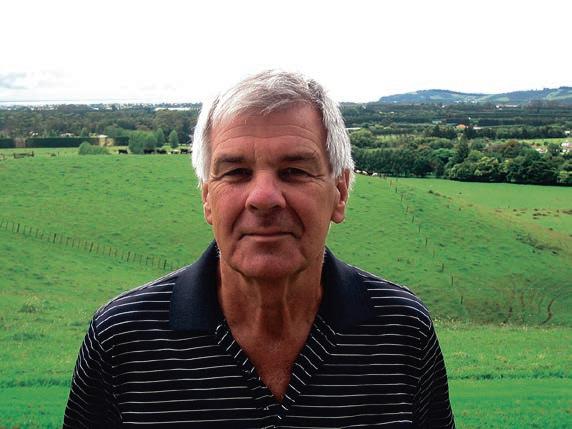
ANZCO Foods has just released its result for 2024, which completes the reporting season for those meat exporters required to publish annual reports. Although ANZCO declared a small pre-tax profit, unlike its South Island based competitors, the combined annual losses make ugly reading. Alliance lost $120.8 million before tax including the Smithfield closure on turnover of $1.772 billion, Silver Fern Farms (SFF) was $29.8m in the red on $2.637bn, while ANZCO posted a profit of $13.5m from $1.85bn revenue. That all adds up to a combined shortfall of $137.1m from turnover of $6.26bn, which casts serious doubt on the continued viability of at least part of the meat processing and exporting sector. This follows a disappointing 2023 when Alliance lost $97.9m and SFF $36.4m, partly offset by ANZCO’s standout profit of
$60.9m. These two financial years are in stark contrast to covidinfluenced 2022, when the three companies posted combined pre-tax profits of $515.1m, while 2021 was also profitable across the
All three have commented on the difficult trading and climate conditions that adversely affected their performance, but the obvious question is whether the two lossmaking companies can sustain previous high profits without a reduction in overheads.
Forestry conversions and land use change will inevitably exacerbate livestock volume decline and promote procurement competition, which will have the greatest adverse impact on the processors with the least efficient plants.
Other exporters spoken to agree last year was harder, but maintain there were satisfactory margins there for both farmers and processors. A clear focus on cost control was essential for an acceptable performance, as shown by ANZCO’s ability to remain profitable.
ANZCO CEO Peter Conley makes the point that all the industry’s assets are getting older, but some companies have done a better job than others of investing in upgrades. The combined effect of an ageing plant and declining volumes is graphically illustrated by the over $50m cost of closing Smithfield.
Conley also points to ANZCO’s improved systems for matching livestock purchases to customer specification instead of chasing market share as a key factor.
The published results cast serious doubt on the need for all the industry’s processing capacity, as a combination of greater plant efficiency, more shifts and lower peak kills suggests some plants are quite simply no longer required.
I have seen an analysis which indicates the North Island lamb and mutton kill could easily be handled with fewer plants, while the South Island kill could be handled at a pinch if Alliance plants were no longer operating.
This of course assumes normal weather conditions with no drought, although the trend to forestry will eventually reduce the peak, requiring less processing capacity.
Earlier this year on farmersweekly.co.nz Dr James Lockhart and Professor Hamish Gow argued that co-operatives are an incredibly efficient model that permits their returns from
procurement and processing to be bundled to set the benchmark livestock price against which all companies are judged.
They maintained it is essential for Alliance to remain a cooperative, as otherwise that benchmark will be lost and the remaining companies will only pay what they have to, while returning the rest to the owners.
Past experience in the meat industry tells me the industry’s schedule-setting process, still unchanged for 40 years, calculates the market value of each component of the carcase according to the week’s exchange rate and direct costs. Having arrived at the schedule for each species, companies then decide on any premiums for supply to a particular specification, for seasonal variation or volume.
Everybody knows there are special deals available to large

suppliers and third parties in times of need, although the two co-operatives have often been the ones offering them when supply from shareholders has fallen short. The higher the above-schedule premiums, the higher the cost of livestock with the obvious impact on profit, unless the excess can be recovered from the market.
With only about 15% of the carcase able to command a market premium, paying over the odds for the other 85% makes it very difficult to recover the additional investment in specific livestock quality attributes.
Lockhart and Gow cited Fonterra and Zespri as two successful examples of the value of the cooperative model. Unfortunately this ignores the failure of this model in the highly competitive environment of red meat processing and selling where farmers have a choice.
Meat co-operatives – Alliance and AFFCO in the late 1980s, SFF from 2012, and Alliance again today – have tended not to invest enough in their assets, pay too much for livestock and allow overheads to balloon, resulting in more core debt, higher interest costs and declining shareholder funds.
After being rescued by outside investment in 2016, SFF now shows signs of falling into the same trap again. The key to success, whether a co-operative or not, is discipline and a focus on the basics.

Staff reporter PEOPLE Arable
PATIENCE and a willingness to focus on details are two key attributes of successful plant breeders, says James Kinsman. He’s three years into his career as a plant breeder at Cropmark Seeds in Canterbury and said the need for both was obvious from the start.
His Cropmark Seeds’ role followed two summers of employment with the company plus financial and mentoring support for his honours project through a fourth year of study to investigate the genetic diversity of endophytes. Endophytes are fungi found in most ryegrass varieties and offer a variety of benefits to ryegrass pastures.
Kinsman’s primary role at Cropmark is to apply conventional plant breeding and selection techniques to deliver typically small but tangible gains to the company’s pool of potential forage cultivars for the future.
Patience is needed because releasing a new commercial cultivar of any forage variety can take many years of selection and testing to ensure it offers advantages over existing commercially available cultivars.
“Once you see your own material coming through, you sort of get attached to it in a way because it’s you who has crossed it, you’ve bred it, and so you’ve always got something to look forward to,” he said.
Seeing improvements through selection is rewarding, but Kinsman said he has learned to accept failures too.
“Sometimes it can go the other way. Sometimes you think ‘I’ll do this to make an improvement’, but then, as with any sort of breeding, it doesn’t always work and then you can be disappointed.”
Being able to think critically is another key attribute that Kinsman said is needed for success in plant breeding.
“Sometimes when you’re looking at trials, you can get quite a lot of what you call noise that might be altering the results, so being able to think critically is helpful to interpret what is happening,” he said.
He is enjoying the variety of his role, and the support and mentorship from senior staff within Cropmark Seeds.
“My role is quite varied; it’s seasonal and also weather dependent too. I find it is a good balance between being outside in the field and also office work, analysing data, reviewing results and planning.”
His workload usually peaks around harvest time early in the year but is consistent through the rest of the year with regular monitoring and maintenance of trial plots, analysis of data collected and planning for the coming year ahead.
He said a good example of Cropmark’s investment in the future of forage is the recent commercialisation of its own endophyte, CM 142, for the ryegrass market. CM142 offers

Once you see your own material coming through, you sort of get attached to it.
James Kinsman Cropmark
protection to ryegrass cultivars from several common pasture pests.
“It’s an exciting development for Cropmark, quite a breakthrough for improving pasture performance, particularly around reduction of staggers.”
His advice to young people considering plant breeding as a career is to gain a good understanding of genetics and breeding, including new technologies like genomics. A good knowledge of agronomy and statistics is also vital.
“Another advantage for plant breeding is having a good understanding of farming and farming systems. You need to know the practicalities of how new cultivars are used in the real world,” he said.

Gerhard Uys TECHNOLOGY Soil
THE soil microbiome may provide answers to some of New Zealand’s pasture and other agronomy woes.
David Wright, the science team leader for microbial solutions at AgResearch, said over the years there have been diminishing returns on the inputs to a system when using nitrogen fertilisers.
“Historically, plant breeding efforts focused solely on the plant itself with little consideration of the microorganisms associated with those plants that perform a number of important functions,” he said.
Farmer’s Weekly reported in January that New Zealand pastures are sliding sharply in
their productivity growth, with minuscule gains in the past 20 years despite farmers pouring on more inputs, including nitrogen and livestock.
“Over the years we’ve put increasingly more nitrogen fertiliser into our systems, and we’re seeing very little response. The question is, are we actually disguising other issues that we’re not aware of? Potentially, underlying issues could be related to what’s happening with soil microbes.”
Wright said AgResearch is trying to understand the relationship between plants and soils, how plants select the microbiome from the soil, and how microbiomes can be introduced to soils by, for example, using inoculants, and how to manipulate these relationships.
Existing single inoculant
products may not be as effective as using communities of microbes, called consortia, that work together and fulfil multiple roles in soils.
Much of the role of the microbiome only becomes evident once challenges, such as climate change, rear their head, he said.
In this case healthy soils make plants more resilient to shocks.
A healthy microbiome could also play a role when multiple challenges arise.
The Environmental Protection Authority is proposing a ban of chlorpyrifos, a chemical used to control the native grass grub, which causes significant damage to pastures
Wright said in future biopesticides could possibly provide solutions to such challenges.

Annette Scott TECHNOLOGY Arable
THE Foundation for Arable Research conference is set to tackle the industry’s increasing concern around profitability for arable farmers.
Actioning the theme Show Me the Money, a range of international and local speakers together with FAR staff will outline ways farmers can reduce costs, improve productivity, diversify into additional income streams and adopt new tools and technologies.
The biennial two-day event is being held at Lincoln University on June 30-July 1.
FAR communications manager Anna Heslop said when organising the conference, FAR considered the key concerns that are front of mind for farmers.
“Regular feedback from growers is that increasing input costs, flat crop contract prices, increased regulatory compliance and extreme weather events continue to challenge their profitability,” Heslop said.
Addressing how to make technology pay will be James Venning, a grain grower from the Yorke Peninsula in South Australia.
Farming over varying soil types, Venning uses a wide range of technologies to aid in decisionmaking and to micromanage areas in his cropping programme focusing on productivity, efficiency and cost effectiveness.
As well as seeing to the day-today running of Barunga Grains, Venning chairs his local grower group Northern Sustainable Soils, is a board member of the Hart Field Site group and a grower director of Grain Producers South Australia.
From the United Kingdom,
arable farmer, entrepreneur and popular YouTuber Olly “Blogs” Harrison will join the conference via video link to outline his farming journey.
Harrison left school at 16 having struggled with dyslexia. Since then, he has grown his farm from 70 to 600 hectares.
His farming business has 14 different income streams, including dog walking fields, chipping wood for biomass, sunflower mazes, and office and holiday rentals.
Increasing input costs, flat crop contract prices, increased regulatory compliance and extreme weather continue to challenge profitability.
Anna Heslop FAR
He is always seeking new ways to commercially exploit his land and assets.
Professor Nicola Randall, the founding director of the Centre for Evidence Based Agriculture at Harper Adams University in the UK, will also appear via video link to discuss whether regenerative agricultural systems add value.
Joining the international line-up of presenters will be the keynote speaker, New Zealand’s Special Agricultural Trade Envoy and Methven arable farmer Hamish Marr.
Farmer discussion panels will provide examples of the different approaches and technologies that growers are adopting to improve their farm business performance.
A conference dinner will double as a farewell to FAR chief executive Alison Stewart, who steps down at the end of June.


Gerald Piddock MARKETS Agribusiness
ATTENDEE feedback along with a favourable economic outlook has made Fieldays staff quietly confident about the success of this year’s event.
Fieldays head of customer and strategic engagement Taryn Storey said their feedback showed there had been quite a shift in 20232024 in terms of motivations for why people attended Fieldays.
This shift shows there is a more purposeful attendee than what has been seen prior.
“It shows a little bit of green shoots of confidence that our attendees – even as early as 2024 – are looking at coming to
these events in a more purposeful way than what they might have previously done.”
Asked if that is a reflection of the economy, Storey said the previous year’s feedback showed attendees are more interested in a day out from the farm.
“It was really clear that in 2024 there had been a shift, where people were actually actively coming here to research, purchase or get a good deal.”
Storey saw that as a confidence indicator that will hopefully be reflected in activity at this year’s event, which takes place from June 11-14 at Mystery Creek.
“We’re hoping to keep it around 100,000 level.
“The economy is looking pretty solid.
“Those motivators that we
started to see in 2024 appear to have followed through in the regional events, so it feels pretty promising.”
Our attendees are looking at coming to these events in a more purposeful way.
Taryn Storey Fieldays
But she warned there are still external factors that can impact that.
Last year’s event also saw a rebound in international attendees as exhibitors, ambassadors and delegations, with 49 exhibitors coming.
Fieldays programme manager Steve Chappell said exhibitors are coming from Europe, South America and Asia.
“We are definitely seeing that lift post-covid.”
This year’s Fieldays will have a theme called Your Place.
Fieldays marketing and communications manager Brett Beagley said this came about from discussions around the motivations of why exhibitors and visitors come to the event.
“We’re out here on the site for the whole year but for four days we pretty much hand the keys over to the exhibitors and the visitors and people feel quite a lot of ownership towards the event.”
For many, especially those who have been coming to the event for
years, coming to Fieldays feels like coming home, he said.
Fieldays event producer Karina Missen said new initiatives for this year include Tent Talks, which is a new twist on their previously held speaker series.
It will feature people who will give 20- or 40-minute talks every day of Fieldays on subjects they are passionate about.
It cannot be a sales pitch, nor can it be political.
“They cannot sell their product, but they can talk about how the product solves a problem the industry might be having.”
There will also be a new drone display area that will include an exhibition area and a demonstration area where the machines will fly no higher than a few metres off the ground.





SIR William Gallagher has been awarded a National Fieldays Life Membership in recognition of his contribution to the event and New Zealand’s agri-tech industry.
Sir William has been a part of Fieldays since its inception, playing a pivotal role in its foundation alongside other influential farmers.
The Gallagher company’s presence at the very first Fieldays in Te Rapa in 1969 was a milestone moment, as the company was already emerging as a leader in farm technology and export markets.
Sir William, alongside his brother John, had been exhibiting at agricultural field days in Australia before 1968 and was an early advocate for establishing a national event in New Zealand.
A champion of agricultural innovation, Sir William has been instrumental in Gallagher’s success at Fieldays, using the event as a platform to introduce world-first products, engage with farmers, and showcase the company’s latest technological advancements.
“Fieldays has been an important part of Gallagher’s journey,” said Sir William.
“It has always been a place for us to connect with farmers, showcase new developments, and contribute to the growth of our farming sector. Receiving this recognition from the Fieldays Society is truly an honour.
“Our long-standing partnership with Fieldays goes beyond exhibiting.

Over the years, Gallagher has launched numerous breakthrough products at Fieldays, won multiple innovation awards, and used the event to gain valuable farmer feedback to make sure that new solutions met farmers’ needs.
“Having the support of an innovative company like Gallagher from the very beginning played a key role in laying a strong foundation for Fieldays,” said National Fieldays Society chair Jenni Vernon.
“Sir William has consistently demonstrated visionary leadership – bringing together talented teams and maintaining a clear focus on progress within the industry.
“Even during challenging times, Gallagher remained committed to investing in new technologies, fostering a steady stream of fresh ideas.
“This life membership is a modest but heartfelt tribute to Sir William’s profound impact in helping shape Fieldays into the world-class event it is today.”
reinforced Fieldays’ reputation as a global hub for agri-tech.
“Through Gallagher, Sir William has helped position Fieldays as a premier stage for showcasing world-leading innovation,” Storey said.
“His ongoing support has helped attract international interest, turning Fieldays into a truly global agricultural event. We are hugely grateful for his incredible vision and support.”
For two decades, Gallagher ran the fence-building competitions at Fieldays, which became known as the “Olympics of fencing”. The tradition remains a strong part of the event today, reflecting the values of practical skill, forward thinking, and community that Fieldays embodies.
“I am incredibly proud of and grateful for this recognition and what it represents,” said Sir William.
“The Gallagher team is always looking for new ways to innovate, adopt the latest technology, and we will continue to work alongside Fieldays to set up Gallagher’s future at the event and support the future of farming.” Staff reporter
RAVENSDOWN shareholders are invited to a top-quality lunch at the Ravensdown tent on any day during Fieldays.
In keeping with longstanding tradition, Ravensdown takes this opportunity to connect with shareholders and showcase some of the fine food and beverages produced by Ravensdown farmers and growers, including Wairau River Wines.
Ravensdown has also teamed up with Mac Hops and Hop Federation to offer a limited edition Ravensdown Pilsner this year.
Our famous lunches are an opportunity to thank our shareholders for their ongoing loyalty and support.
Daniel Prani Ravensdown
The beer is a homage to the Ravensdown/ Mac Hops relationship and the fruit born from ongoing soil fertility support, which helps optimise ultimate hop growing conditions.
Ravensdown chief sales and marketing officer Daniel Prani said the co-op typically hosts upward of 2500 shareholders at Fieldays.
shareholders and are always happy to discuss products and talk about how we can support them meet their farm fertility and productivity requirements.
“Our HawkEye team is usually one of the busiest and we expect this year won’t be an exception. We’ve got some next gen HawkEye innovation in the pipeline that will take productivity and precision application to the next level.”
Shareholders should have received an invitation to Fieldays, including a link to register for lunch.
In recent years the team responsible for establishing and running Ravensdown’s Fieldays site has honed its focus on durability and sustainability.
“In 2024 our attention to sustainability was formally recognised when the Ravensdown site was awarded the Commitment to Sustainability Award. The judges paid particular homage to our well-designed food and waste management system in the shareholders’ hospitality area,” Prani said.
The site is also home to the award event for the Agricultural Communicator of the Year.
“It’s a place and a community of people dedicated to fostering new ideas, supporting the primary sector, and shaping the future of farming in New Zealand. It is something truly special.”
Fieldays head of customer & strategic engagement Taryn Storey said Sir William’s leadership has
“Our famous lunches are an opportunity to thank our shareholders for their ongoing loyalty and support.
“While we’re open to fertiliser orders, there’s no hard sell. Our team appreciates the chance to catch up with
Hosted after hours by the New Zealand Guild of Agricultural Journalists and Communicators, the awards are an occasion for the sector’s media and communications community to celebrate outstanding achievement in the field.
In 2024 the award went to Alan Emerson and there is an impressive honour roll including Farmers Weekly managing editor Bryan Gibson and leading agronomist Professor Jacqueline Rowarth.


NEW Fieldays chief executive
Richard Lindroos will draw on his event management experience as he settles into the role of running the southern hemisphere’s largest agricultural event. Prior to being made Fieldays
CEO, he ran major events including the America’s Cup when it was held in Auckland, FIFA events, Supercars at Pukekohe and the Auckland Marathon.
Working in the major events space is quite comparable to overseeing Fieldays in terms of the event size and scale as well as transferable skills, he said.
“It’s the same kind of responsibility.”
But one major difference is that


events like Fieldays are venue controlled instead of being in the public domain, like the Auckland Marathon.
Lindroos has been to Fieldays both as an attendee and as a guest at some of the functions that take place over the course of the event.
“What attracts me [to the role]? The privilege of leading an organisation that is iconic in New Zealand, the privilege of leading agribusiness – which is so important to New Zealand.
“What an opportunity. Agribusiness is at the forefront of everything in New Zealand, the eyes are on us, so we have got to perform.”
The scale, size and challenge of the event also attracted him to the role. He saw it as a responsibility to showcase agribusiness both to New Zealand and the world.
With most of the preparation work for this year’s event already done, Lindroos is happy to initially take more of a back seat role where he observes and adds value where he can. In that sense, he said it is the ideal time to come in.
There are also multiple dimensions to Fieldays. There is the event that the public sees and the more internal event that includes all of the government and VIP events.

“We need to maybe do a better job of educating New Zealand that this is what we do: we are the agribusiness platform for New Zealand.”
He also sees potential for the Fieldays Society and Fieldays as having more of a New Zealand Inc approach rather than a greater Waikato focus.
“We serve all of New Zealand and we need to say we’re open for business.”
We want a queue of attendees, a queue of exhibitors and I want a queue of people who want to work here.
Richard Lindroos New Zealand National Fieldays Society
He also wants to focus on futureproofing the organisation. Looking back, the covid-19 impact on charities was tough and Lindroos wants to look at ways to make Fieldays more resilient.
“We’re 57 years old this year, let’s have a horizon of 25 years and what Fieldays is going to look like.
“The world will be different in 25 years – AI, innovation, population.

STARTING LINE: New Fieldays chief executive Richard Lindroos says leading an organisation like the New Zealand National Fieldays Society is a huge privilege.
What are we going to do?
“I don’t come from an agribusiness background, but what I do come from is experience in putting on major events, putting them on well, on time and under budget.
“I look at it and go, ‘This is an awesome event, how can we do this better for the attendee, how can we do this better for the exhibitor and how can we do it better for the volunteer and staff involved in it?’
“We want a queue of attendees, a queue of exhibitors and I want a queue of people who want to work here.”
While it’s the largest agricultural event in the southern hemisphere, maintaining that means going global. That could see Fieldays open the door to more international exhibitors, Lindroos said.
The economic signals from across the primary sector are also looking positive.
“Given how agribusiness is faring in New Zealand and how we are trading, we would like to think that could translate into a very successful Fieldays.”
At the time of the interview everything was on track and the exhibitor sites were close to being sold out, he said.
“June 11, bring it on.”

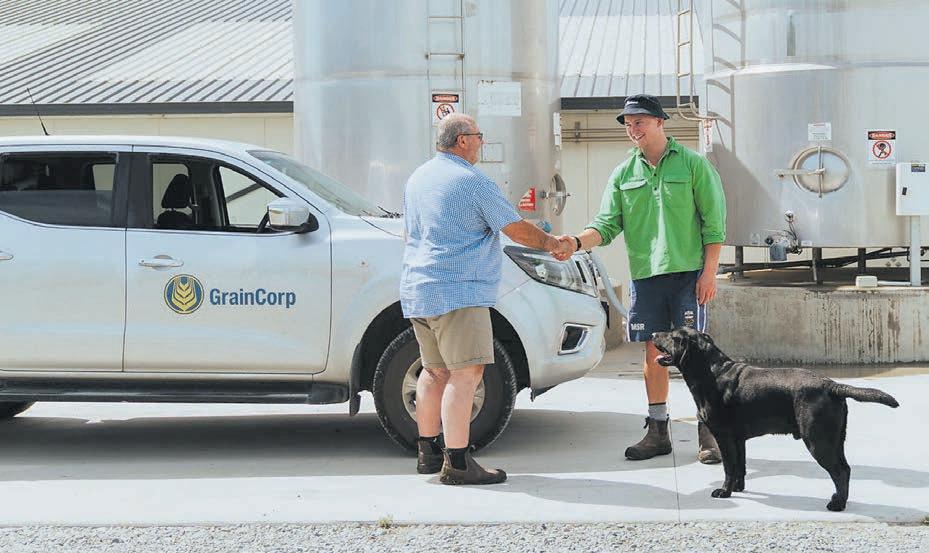

Richard Rennie NEWS Horticulture
THIS year’s Mystery Creek Fieldays represents a “third time lucky” opportunity for Bay of Plenty-based orchard development company GrowTech as farmers’ interest in spreading income risk stretches to kiwifruit, in areas once considered strictly pastoral.
Company director and founder Zane Marsh said having a company stand at what is usually associated more with the pastoral sector than orcharding has seen a slow build of interest and return over three years.
His company specialises in installing structures and coverings for kiwifruit orchards, and at this year’s Fieldays he has opted to offer a “grower focused” competition delivering the winner services that can be spread between orchard operations and locations.
“We could have gone for simply offering something like a ute, but despite the better returns orchardists are enjoying we know most orchard owners and operators are still having to work very hard to turn a profit.
“Revenue may be up, but costs are up significantly more, and unlikely to come down any time soon.”
With that in mind he is giving operators the chance to go into a draw to win a $30,000 orchard services package.
“From that you can take out any number of services or products, including putting it towards overhead orchard covers, windbreaks, GPS systems, plant supply and fabrication repairs.”
Having recently purchased and planted his own 9 hectare
RubyRed orchard in Cambridge, he appreciates the installation and operating costs facing growers.
“You have a lag before earning off that new orchard, and having access to $30,000 can really make a difference before that crop cheque comes in,” he said.
To keep the prize as flexible as possible the winner can spread its spend over three years, and multiple orchards.
“For me it is about giving back to the industry and to fellow growers. I would not be able to do what I do without them.”
Marsh is optimistic about taking a punt on the newly commercialised RubyRed fruit, which is becoming increasingly
popular with growers in nontraditional districts like Waikato.
“The licence cost was considerably less than SunGold, and land prices in Waikato are considerably more affordable.
“The challenge with RubyRed is to improve the keeping ability, which is still quite short, but hopefully that will come in time.”
Covering orchards is a relatively recent move in the industry, but Marsh said it reduces frost risks, lowers wind damage risk and improves productivity by buffering from some of the weather’s influence.
The competition will be drawn at Mystery Creek on Saturday June 14.

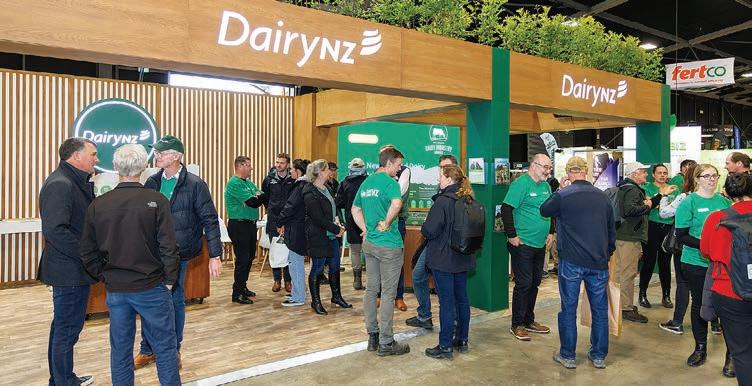
THEME: DairyNZ’s site at this year’s Fieldays will focus on the theme of innovation, integration and collaboration.
experience the positive impact that partnership and a focus on waterway health can create.
• Greenhouse gas emissions
DAIRYNZ is bringing its science, expertise and some interactive displays to this year’s Fieldays.
The focus is “innovate, integrate and collaborate”, showcasing how its research and partnerships are helping shape resilient, future-fit farm systems.
There is something for everyone including the latest science, a chance to connect with sector leaders, or explore tools to take back to the farm.
At its main stand in the Pavilion (site PC44) DairyNZ’s farm system expertise will be in action, highlighting some of the organisation’s key research including:
• Improved forage gains – See and compare forage species in a display model, and discover more about their resilience under stress, and how improved forages can enhance feed efficiency, profitability, and resilience on your farm.
• Healthy waterways – Learn about practical tools and actions to enhance waterways and go in the draw to win $1500 worth of plants. Punters can also immerse themselves in a VR kayak journey through the Pōkaiwhenua Catchment and
– Gain clarity on this complex topic and hear about the top actions one can take to help reduce emissions on the farm, while considering the full farm system to maintain profitability.
DairyNZ’s specialists, board members and leadership team will also be there to answer questions and chat about how they are working to ensure New Zealand dairy thrives well into the future.
You can also swing around the corner to site PB49 in the Pavilion to catch up with the team at Dairy Training, a DairyNZ subsidiary, who are ready to talk about free, NZQAaccredited practical training options to upskill you and your team.
DairyNZ are also collaborating with partners to make visiting their site worthwhile. They will also be at the MPI Science for Farmers Tent (E38), where they are showcasing science projects supporting the future of dairy farming.
At the Federated Farmers Advocacy Hub (D70, Gallagher Building), they are highlighting their work advocating to ministers and MPs on the key dairy sector issues.


Staff reporter NEWS Research
TE KUNENGA ki
Pūrehuroa Massey
University is returning to Fieldays with a future-focused stand highlighting practical, science-driven solutions for a more sustainable and efficient agricultural and primary production sector.
Visitors can explore the Right Dog for the Job project, Aotearoa New Zealand’s first large-scale genetic study of working farm dogs at its site, PE51.
This three-year project, led by Massey and supported by industry partners including Pāmu and Focus Genetics and co-funded by the Ministry of Primary Industries (MPI), has sequenced the genomes of 249 Huntaways, Heading dogs and crossbreeds to date.
Researchers identified over 19 million DNA variants, including five health-linked traits that will be investigated further. The next phase of the research will be
collecting more DNA samples, in close collaboration with farmers and vets to track health and performance traits.
In a unique blend of design, science and culture, Massey will also present a new type of auxetic packaging that expands when stretched. Developed through collaboration between the College of Creative Arts and College of Sciences, this innovative packaging helps reduce primary produce damage and food waste while integrating kōwhaiwhai patterns that reflect Māori cultural values of protection and care.
Having already found success with kiwifruit, the team is now working with commercial partners, seeking to expand their research and applications, and will provide development process demonstrations and have prototypes on display.
Another key research highlight on display is Massey’s long-term project tackling the growing cost burden of shearing by exploring the use of self-shedding Wiltshire sheep. The multi-year flock study


has been tracking the production and performance of the sheep as the flock is gradually bred from Romney sheep towards Wiltshire genetics.
The group is also identifying the genes involved in shedding. Researchers will share current insights and findings on the stand, to demystify the science behind production animal genetics and talk to farmers about practical applications.
Massey experts will also feature at the MPI Science for Farmers site, providing updates on Whenua Haumanu, New Zealand’s most comprehensive regenerative and pastoral agriculture research programme, and the Catchment Solutions project, which builds capability to improve freshwater outcomes.
The School of Agriculture and Environment currently hosts more than 135 PhD students and 160 Master’s students, helping drive New Zealand’s research in agricultural and horticultural science.
Experts will be on hand all

Massey is the No1 New Zealand ranked university for agriculture and the leading vet school in the southern hemisphere.
week to discuss the latest in these projects, and how farmers, communities and others can get involved.
Academic and Future Student advisers will be available
throughout the four days to answer course-related questions and connect visitors with study and career opportunities.
Massey is the No1 New Zealand ranked university for agriculture (QS Rankings), the leading vet school in the southern hemisphere, with a No1 ranking in Australasia and Asia (QS Rankings), and the 43rd ranked school for food technology (Shanghai Rankings). Massey offers flexible study options: fulltime or part-time, on campus or via distance.
Staff reporter NEWS Breeding
LIVESTOCK Improvement Corporation is excited to welcome people to its home of herd improvement, stand E80, at this year’s National Fieldays.
LIC general manager for NZ markets Geoff Corbett said the team is looking forward to connecting with farmers following another busy dairy season.
“This will be my first National Fieldays as LIC’s GM for NZ markets, and I’m looking forward to sharing some of the great work we’re doing to
help New Zealand dairy farmers breed more profitable and productive herds.
“We’ve included some exciting additions to our stand this year to bring the tools of herd improvement to life.
“Our team of specialists from across genetics, animal health, herd testing and farm software will also be available to answer questions.”
Farmers visiting the LIC stand can take a break and unwind with some coffee and food, while engaging in a number of speaker sessions.
These will begin each morning at 9.30am with speakers including Kiwi athlete Shane Cameron, who will
talk about his journey from farmer to boxer to businessman. LIC board chair Corrigan Sowman and experts across MINDA and research and development will also speak. Timing for speaker sessions will be available across LIC’s social media channels leading up to the event, as well as at the LIC stand.
LIC will also be at the Ministry for Primary Industries Science for Farmers site (E38) where the coop will be highlighting its exciting research, which aims to provide New Zealand dairy farmers with the ability to breed cows with improved heat tolerance.






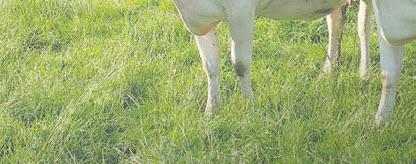











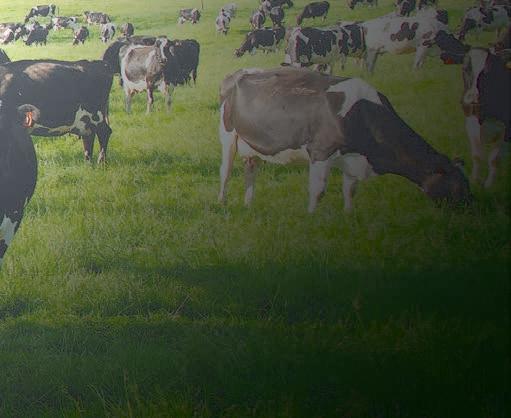









In my view
Daniel McGowan
McGowan is the CEO of Cure Parkinson’s NZ
IS PARKINSON’S disease man-made? Dutch neurologist Bas Bloem certainly believes so, as do many of his international colleagues. A growing body of evidence links the disease to herbicides, pesticides, industrial chemicals and air pollution, among a range of environmental factors.
Parkinson’s disease, a progressive neurological disorder that robs sufferers of many of their faculties over time, is the world’s fastest growing neurodegenerative disease. It has been described as an emerging pandemic, with numbers expected to double over the next 15 years.
And it is no coincidence that it was first described in London 200
years ago, by Dr James Parkinson, at the height of the industrial revolution.
While genetics and age play a role in elevating the risk of the disease (and some rare genetic mutations will cause it), the major driver of this insidious disease is exposure to environmental toxicants.
The major driver of this insidious disease is exposure to environmental toxicants.
Farmers and their families are particularly at risk given the very strong associations that have been identified between use of herbicides and pesticides like paraquat, heptachlor and rotenone, and Parkinson’s disease.
Paraquat has been found to increase the risk by as much as 200-600% depending on the level
and duration of exposure, and it is now banned in many countries, but not NZ (where it is, however, highly restricted).
Further, the risk of Parkinson’s is not confined to those working with these chemicals, but also extends to those living near their application.
Some of these chemicals enter the food chain and water supply as well, adding to the exposure.
If a disease like Parkinson’s is indeed man-made, it should also be preventable through smart regulation and careful use of chemicals to reduce exposures.
That is why it is so important to know what you’re using, and to stay informed about which chemicals are linked to health risks.
It is critical to use appropriate protective gear including gloves, long-sleeved clothing, eye protection and a certified respirator when spraying or mixing chemicals.
If you are experiencing

symptoms such as loss of smell, difficulty sleeping (especially acting out dreams), tremors or slowed movement, ask to see a neurologist familiar with Parkinson’s and mention your occupational exposure.
The emerging Parkinson’s pandemic already impacts 13,000 Kiwis and costs the NZ
economy in the region of $600 million annually. With the right knowledge and approach, you can avoid adding to those statistics.
MORE:
You can visit Cure Parkinson’s NZ, a charity devoted to funding and driving research toward a cure for Parkinson’s, in the Health Hub at National Fieldays.
Staff reporter MARKETS
Emissions
SMAXTEC will be showcasing at this year’s Fieldays the latest improvements to its internal bolus system, which gives dairy farmers
Without smaXtec, I wouldn’t have noticed it until three or four days later.
David Thompson Feilding
an early warning on potential health issues a cow may have from inside its reticulum.
These improvements include the Digital Assistant and the AIpowered TruAdvice.
The Digital Assistant acts as a virtual team member, generating automated task lists to help farms efficiently organise workloads and resources.
TruAdvice uses artificial intelligence to analyse millions of data points and calculate disease probabilities before clinical signs appear.
Based on that, dairy farmers receive early disease indication
notifications for mastitis, ketosis, and milk fever.
The bolus continuously monitors internal body temperature and tracks water intake, drinking patterns, rumination and overall activity. It acts as an early warning system for the cow, helping detect illnesses early before visible signs appear, allowing for quick, targeted action.
This results in reduced antibiotic use, lower treatment costs, improved animal welfare, better reproductive outcomes and more consistent milk production.
Taranaki dairy farmer Hayden
Lawrence said it had improved heat detection, reduced mastitis cases and costs by 64% and 56%, respectively, among his 430 cows. It had helped better manage calving, calf health and fresh calvers, he said.
Farming couple Sarah and Wayne Neilson, from South Taranaki, said it enabled them to detect a cow suffering from a twisted bowel.
“We caught it early. It had just started when we were able to get the vet to remedy it. He had the thermometer in the cow and said, ‘I will never have to deal with that ever again, this is such reliable


data.’ Now, the vet checks the data first because the temperature alerts are always accurate.”
Feilding farmer David Thompson said he received three temperature alerts over three days which saw his vet confirm pneumonia, even though the cow appeared fine.
“Without smaXtec, I wouldn’t have noticed it until three or four days later.”
SmaXtec’s site PC15 in the Pavillion will show how farmers can see firsthand how this technology can future-proof their operations by putting cow health insights right at their fingertips.



Staff reporter
FIELDAYS has embraced a “mullet strategy” –business in the front, party in the back – to bring this year’s event together.
The hairstyle, which is regularly seen during the event at Mystery Creek, symbolises the important business and entertainment factors that make Fieldays.
New Zealand National Fieldays Society head of customer and strategic engagement Taryn Storey said Fieldays has always been about combining cuttingedge agricultural technology, networking and insightful discussions.
“This year we’re leaning into that even more with the mullet strategy, ensuring both business and entertainment factors are equally compelling.”

CLASSIC: The mullet hairstyle, which is regularly seen during Fieldays, symbolises the business and entertainment
New “business in the front” initiatives include Fieldays Tent Talks and the Fieldays Sector Spotlight – It’s Wool.
Fieldays Tent Talks are focused on engaging educational discussions, expert-led sessions and real-world solutions, while the Drone Zone, a live demonstration area, in association with the Agricultural Drone Association, is a must-visit for anyone eager to see how drones are revolutionising farm management.
The Fieldays Sector Spotlight plans to highlight a sector within the primary industries each year, in conjunction with the Ministry for Primary Industries
The focus will be on wool for this year’s event, highlighting the versatility and quality of New Zealand wool.
Exhibitors will showcase the key roles they play in the wool sector, and the consumer use opportunities. The site will also connect producers and designers to help ensure a secure future for this timeless natural resource.
The new initiatives join returning Fieldays hubs: the
Staff reporter
THIS year at Fieldays, herd improvement company CRV is putting the spotlight on how farmers can make better use of their on-farm data to support herd and business decisions.
Its site, inside the Main Pavilion at PE19 and PE21, will focus on myHERD, CRV’s herd recording software, which is designed to help farmers capture, interpret and act on key data from their herd.
With the increasing role of digital tools in farm management, platforms like myHERD are becoming central to how farmers plan for the future.
CRV Oceania managing director James Smallwood said farmers are moving beyond just collecting data for compliance – they’re now using
it to drive long-term genetic and operational improvements.
“We’re seeing a shift in the way data is viewed on farm. It’s no longer just about collecting numbers – it’s about connecting that information with practical decisions like sire selection, herd replacements and animal health.”
This insight is helping more customers make smart mating decisions.
James Smallwood CRV
That message was reinforced during CRV’s recent Better Herd events, which showcased the role of genetic improvement in delivering better business outcomes.
The first step, is to identify what
each animal is doing in the herd.
“With myHERD, farmers can combine genomic data and herd test results to clearly identify their top-performing cows.
“This insight is helping more customers make smart mating decisions – for example, using sexed semen on their best cows and beef sires for the bottom end, rather than just mating whatever’s on heat to whatever bull is available that day.”
Sales trends show that farmers are acting on this insight. The proportion of sexed semen sales has increased 20% compared to the previous season, while at the same time dairy beef has jumped by 58%.
Interest in CRV’s global sires continues to grow, with these bulls proving a strong fit for New Zealand’s more intensive farming systems. The proportion of sales
Rural Advocacy Hub, Forestry Hub, Careers & Education Hub, Innovation Hub and the Hauora Taiwhenua Health & Wellbeing Hub.
During the week it’s all about networking and ... sealing deals. By Saturday it’s time to celebrate.
Taryn Storey New Zealand National Fieldays Society
“Party in the back” initiatives include the Fieldays Family Fun Zone in the Heritage Village and Super Saturday – a campaign with exhibitors to deliver unbeatable prices and exclusive Fieldays-only offers.
Entertainment favourites also return including the One Big Dig activity, which will run on the hour from 10am to 4pm each day of
the event on the Fieldays Village Green.
The 50th anniversary of Fieldays Tractor Pull will also bring excitement to punters. The entry form is now open, and early indications suggest it will be a busy event.
Storey said they wanted to create a format that reflects the way people engage with Fieldays.
“During the week it’s all about networking and business discussions, research and sealing deals with a handshake. By Saturday it’s time to celebrate those achievements, wrap up any last-minute business and shopping endeavours, and celebrate with friends and family at Super Saturday”.
With more than 1200 exhibitors, Fieldays visitors can expect to see a diverse range of innovative agricultural technology, farm equipment, and rural lifestyle exhibits and bag themselves a bargain.

made up by global sires has increased by 46%.
At Fieldays, CRV staff will be on hand to walk visitors through how myHERD works and how it
connects with other services like herd testing and genomic analysis – and how it supports on-farm decision-making every step of the way.











Staff reporter
TECHNOLOGY
Awards
THE Fieldays Innovation Awards once again promises to showcase the future of agricultural technology.
This year’s competition has attracted a diverse and impressive array of innovations from across the primary industries, highlighting the growing importance of technology in farming.
Sixty-three applications have met the entrant criteria and been invited to participate in the Innovation Awards. These participants will showcase automation, robotics and AI innovations alongside practical on-farm efficiency-increasing devices and “problem solvers”.
“What stands out this year is the breadth of areas the entries come from. Innovation is thriving as groundbreaking ideas redefine sustainability, automation, and efficiency,” said Fieldays programme manager Steve Chappell.
“From eco-friendly materials that transform waste into valuable
resources to AI-powered tools optimising livestock management, precision monitoring and crop growth, each development embodies the future of smart, sustainable progress.”
There are 23 participants in the Prototype category, 32 in Early Stage, and eight in the Growth & Scale. Five participants are also in the running for the Young Innovator of the Year award for participants 19 years old and under.
What stands out this year is the breadth of areas the entries come from.
Steve Chappell Fieldays
Entries include autonomous systems like Gallagher Animal Management’s precision beef management platform and MAKI’s water-monitoring drone, alongside methane-reduction technologies such as Ruminant Biotech’s Emitless bolus and Agricultural Sciences’ Agriboost.
Innovations turning waste into value are also front and centre,
with KiwiLeather Innovations creating vegan leather from kiwifruit waste and Tertiary Extracts Otautahi producing a protein ingredient from sheepskin offcuts.
Awards participants will display their entries at Fieldays in the Fieldays Innovation Hub or on their own site around the event and on the Fieldays Innovation Trail.
The participants are vying for a share of a total prize package of cash, services, and products worth more than $75,000 to help launch or accelerate their new product.
The participants will be judged by a panel of 18 sector experts, including new judges Emma Poole, Michelle Good, Justin White and Oliver McDermott, with five finalists in each category being selected and announced by late May.
The popular People’s Choice Award will return, allowing visitors to vote for their favourite innovation.
MORE:
For more information and to view the full list of participants, visit fieldays.co.nz
Staff reporter TECHNOLOGY Agriculture
BALLANCE Agri-Nutrients is returning to Fieldays with a packed line-up of innovation, giveaways – and the hospitality the Ballance site is known for.
Visitors can expect a warm welcome – quite literally – with Ballance’s Fieldays-famous hot pies, barista-made coffee and hearty soups on offer throughout the event. All are complimentary for Ballance customers and shareholders.
As always, Ballance is using Fieldays as an opportunity to
showcase fresh thinking and practical solutions for Kiwi farmers and growers.
This year, the spotlight is on ReFlow, a new dairy effluent management system developed by the Ballance Innovation team. The system is designed to help farmers better manage effluent application and nutrient capture. A model of ReFlow will be on display, and the team will be on hand to explain the technology and its on-farm benefits.
Adding a bit of light-hearted fun is the new Ballance the Scales interactive activation. The game challenges participants to race against the clock to balance the
scales with quality fertiliser and quality produce, and be in to win an instant prize.
Competitions and giveaways are a staple at the Ballance site, and this year is no different: two winners will each score $1000 towards their Farm Environment Plan and additional prizes tied to the ReFlow launch and Ballance’s SuperAir will also be up for grabs.
For families attending Fieldays together, the Ballance team has made sure the site is family friendly.
A dedicated lounge area will give the kids space to play while parents enjoy a break, a catch-up, or a coffee in peace.

DIVERSE: This year’s Innovation Awards have attracted a diverse array of innovations from across the primary industries, highlighting the growing importance of technology in the future of farming.
Staff reporter NEWS Fonterra
FONTERRA is looking forward to hosting visitors in its marquee, which will be in its usual spot at Site F67, on the corner of F Street and K Road.
It will feature a dedicated lounge for Fonterra farmers, with barista made coffee using Fonterra milk and delicious food prepared by Rescued Kitchen.
The shareholder lounge will focus on the co-operative’s strategy, showcasing its ingredients and foodservice channels, which combined make up more than 90% of the co-op’s milk solids.
The set-up gives farmers an opportunity to connect on key topics, including Fonterra’s potential consumer divestment.
Farmers will have the chance to taste Fonterra’s high-value ingredients and foodservice innovations.
There will be plenty of experts
available to learn more about these channels, as well as trade stands on community, organics and more.
Meanwhile, the public side of the marquee will be packed with activities and experiences, with something for everyone to enjoy. Visitors will be able to get behind the wheel of a Fonterra milk tanker and compete in Fonterra’s famous Milk on the Mooove marble race, which shows the process of a “milk drop marble” travelling through Fonterra’s unique supply chain –from grass, to glass.
They’ll also have the chance to learn about future career opportunities at the co-op, and the little ones will have the chance to design their own cow mask. There will be edible prizes up for grabs, made with Fonterra ingredients.
Fieldays is a great opportunity to connect with the co-op and learn about the value of New Zealand dairy and the future of Fonterra.

P r o t e c t i n g y o u r n o s e i s c r u c i a l f o r b r a i n h e a l t h b e c a u s e i t s e r v e s a s t h e
m a i n e n t r y p o i n t f o r a i r a n d i n h a l
p a t h o g e n s , w h i c h c a n d i r e c t l y r e a c h t h e b r a i n T




The Ministry for Primary Industries will be focused on agricultural science and practical help for farmers and growers at Fieldays 2025.
Across several sites, the Ministry for Primary Industries (MPI) will highlight the work happening across biosecurity, agriculture, science, forestry, trade, careers, and more.
Farmers, growers, and producers will find plenty of practical support and useful ideas, and MPI staff will be on hand to talk through the wide range of services available — including On Farm Support, farm and forestry advisory services, animal welfare guidance, Māori agribusiness support, and information on stock assessments and onfarm verification.
For our farmers, the Science for Farmers hub will feature tools, research, and insights that can help reduce emissions, manage environmental pressures, and improve on-farm productivity.
Farmers can also catch up with MPI’s On Farm Support team, who work directly with farmers and growers across the country to help better understand regulations, adopt useful changes, and connect with funding and advice that fits your business.
Beyond the farm gate, visitors to MPI’s main site will get a look into New Zealand’s worldclass biosecurity system and meet our frontline teams working every day to keep our country safe from harmful pests and diseases. Visitors can learn more about our multi-
layered biosecurity system and the processes that help safeguard our natural environment — and protect our multibillion-dollar primary industry exports.
MPI’s export advisers will be on hand in the Agricultural Pavilion, alongside New Zealand Trade and Enterprise (NZTE), to provide tailored advice on requirements, market access, and how to grow your agribusiness.
The release of the latest Situation and Outlook for Primary Industries (SOPI) report will provide an update on the export performance of the food and fibre sector – and the road ahead.
The Science for Farmers hub will feature tools, research, and insights that can help reduce emissions, manage environmental pressures, and improve on-farm productivity.
New for 2025, the It’s Wool site shines a light on the future of wool, developed in partnership with MPI, Fieldays, and Wool Impact. Innovative companies like T&R Interiors (FLOC), Wisewool, and WRONZ will share more about how they are transforming wool into high-performance solutions for flooring, filtration, and furniture.
The Forestry Hub returns for its fourth year, with Te Uru Rākau – New Zealand Forest Service and other sector organisations offering engaging exhibits on trees on farms, wood innovation, and sustainable forestry. Visitors will see how trees on farms can boost productivity and resilience, how forestry

adds value to our economy, environment and rural communities, and how wood-based innovation is opening the door to smarter, more sustainable land use. Don’t miss the inaugural Growing Native Forests Champions Awards — celebrating people making a difference in native forest regeneration.
A few of MPI’s veterinarians, scientists, quarantine officers and fisheries officers will also be at the Fieldays Careers Hub (the Hub) to share about the wide range of careers in
the food and fibre sector. From science to biosecurity to frontline roles, visitors can learn how they — or someone they know — can join a rewarding career in a growing sector.
See us at Fieldays®
• MPI site: PD44
• Careers Hub: E30
It’s Wool: PC47
• Forestry Hub: G80
Science for Farmers will return to National Fieldays 2025, connecting farmers and growers with some of New Zealand’s leading science and innovation to help boost on-farm profitability and improve environmental outcomes.
Following a successful launch in 2024, the site returns this year with an expanded group of sector partners showcasing the science driving more sustainable and productive farming across New Zealand.
The Science for Farmers site is a partnership between MPI’s On Farm Support service and industry partners AgResearch, AgriZeroNZ, LIC, Massey University, the New Zealand Agricultural Greenhouse Gas Research Centre (NZAGRC), as well as new collaborators DairyNZ and Pāmu.
MPI’s chief science adviser, Dr John Roche, says the initiative will give farmers and growers the opportunity to engage directly with experts, explore new innovations, and
leave with actionable ideas to implement on their own farms.
“The interactive site aims to bridge the gap between scientific research and onfarm application, with exciting new exhibits focused on improving freshwater quality and on-farm performance featured this year,” Dr Roche says.
“One area of research will focus on genetic technologies designed to enhance on-farm efficiency and productivity, while

another will explore strategies for farmers to adapt to a changing climate,“ says Dr Roche.
“This includes studies on diverse pastures, heat-tolerant livestock genetics like the Slick gene, and the development of climate modelling tools to help support futurefocused decisions.
“We’ll also be highlighting the latest tools and research to help reduce greenhouse gas emissions, along with innovations and future investment pathways.”
Another important feature of the site will be daily presentations from farmers and industry experts, offering practical insights to help farmers build more future-ready businesses.
The On Farm Support team and their research partners look forward to connecting with more farmers and growers at Fieldays. Meet the team at the Science for Farmers site at E38 corner of E Street and M Road (previously the Sustainability Hub site).

Samantha Tennent MARKETS Animal wellbeing
BY THE end of the year, a cutting-edge app will give select sheep farmers a new weapon in the battle against drench resistance.
At the helm is Waimate vet Ryan Luckman, bringing both optimism and expertise to the fight.
“Most vets I talk to around the country have farmers who’ve gone from having drench resistance to seeing drenches work again on their farms,” Luckman said.
The app concept — DAGI (Drench and Grazing Integration) — was born from Luckman’s work helping farmers apply Wormwise principles.
“Sitting down with farmers, trying to visualise what was happening on their farms and how they could manage the risk, I realised how difficult it was to capture the right information to support good decisions,” he said.
“And I thought, there has to be a way to automate this.”
With the idea in hand, the next step was turning the concept into a working model.
Refugia is at the heart of the app, a strategy promoted by Beef + Lamb New Zealand’s Wormwise programme. The aim is simple: prevent farms from becoming
overrun by drench-resistant worms.
“In essence, you’re trying to leave worms on your farm that haven’t been exposed to drench and maintain those populations at higher numbers than the worms that have been drenched,” Luckman said.
I realised how difficult it was to capture the right information to support good decisions.
Ryan
Luckman Waimate
“And then incorporating strategies like larval avoidance, where grazing management keeps young stock off recently contaminated paddocks to reduce parasite challenge.”
His goal was clear — to make Refugia a practical solution and simplify the navigation of the increasing challenge of drench resistance. From his experience with wearable technology in dairying, he knew that data needed to be easy to access and use.
“With DAGI, all the complex processes will happen behind the scenes. The farmer’s job is to simply consult the app to determine the best grazing

strategy for their lambs.”
For instance, a paddock might seem like the best choice based on feed quality, but DAGI could alert the farmer to a potential larval risk.
The tool is powered by two trusted models: the Turned Worm model from the University of New England and the Q-Graze model developed by AgResearch and BLNZ.
In the early stages of development, the Sheep and Beef branch
of the New Zealand Veterinary Association (NZVA) supported Luckman in hosting a day-long workshop in Christchurch to bring industry experts together to test the combined model.
And support from Startup Aotearoa connected Luckman with a mentor, who introduced him to an app developer, Alex Duval, who has been building the tool.
DAGI has been selected as a finalist in the Prototype category at the Innovation Awards at
Feildays and Luckman will be looking for farmers to join the initial beta-testing phase.
“Later this year, we are softlaunching the app to select farmers to test it in practice with their veterinarian or other rural professionals supporting them in their drench resistance challenge.”
When Luckman graduated from university, he was warned that drench resistance would become an issue. Nearly 20 years later, the sobering reality is that over a third of sheep farms are facing the issue, and there is growing concern in the cattle industry too.
Luckman is confident that DAGI will support farmers both here and eventually internationally, as drench resistance is a challenge in all pasture-based systems.
He is also conscious of data entry challenges and is already talking about integrations with technology companies like FarmIQ and Resolution.
“Farmers want to be able to grow lambs faster, get them off the farm earlier and use less drench because that costs money too. But we know that larval challenge reduces feed intake, which reduces their growth and requires more drenching. It’s a vicious cycle.
“So if we could show farmers where the risk spots are, it should allow them to farm more profitably.”


























































Over the past month, I’ve travelled the country attending Federated Farmers’ provincial AGMs and farmers have delivered a clear, urgent message at every stop.
They’re deeply concerned about where New Zealand’s climate change policy is heading and the devastating impact it’s already having on rural communities.
Farmers aren’t opposed to reducing emissions; we’ve been engaging constructively on climate action for years.
But the current direction is being driven by assumptions that are wildly out of step with farming realities.
The result? Policy settings that threaten the viability of rural New Zealand.
One of Federated Farmers’ key election priorities was to urgently review our methane targets.
To the Government’s credit, that review has been completed, but now we need action.
Our methane targets must be amended to reflect reality — to be fair, science-based, and economically sustainable.
However, rumours that the Government is considering locking in a methane target of 24% by 2050 mean this target review risks becoming a step backwards.
Last week, I wrote to Minister of Climate Change Simon Watts and

Minister of Agriculture Todd McClay to express Federated Farmers’ strong opposition to this potential 24% methane reduction target.
The assumptions behind this target are deeply flawed.
The Government claims agriculture is ‘on track’ to meet that goal, but this view is based on speculative modelling that ignores on-farm practicality and affordability.
The same modelling underpins our latest emissions reduction plans and international commitments — and it doesn’t hold up to scrutiny.
For example, the modelling assumes widespread use of methane-reducing boluses —
a technology that doesn’t yet exist at commercial scale, hasn’t been market-tested, and may be prohibitively expensive.
Even if such a bolus did become available, current mineral boluses cost $100–$200 per unit and the Government has indicated a methane bolus would only be effective for 100 days, meaning it must be administered multiple times a year.
Based on current herd numbers, such a bolus would cost $1.3 billion annually — not including labour or animal handling costs.
The modelling also assumes more than 90% of sheep and beef
farmers will adopt ‘low-methane genetics’. Yet there’s been no industry engagement on how this would be achieved, how feasible it is, or what impact it might have on breeding programmes, productivity or profitability.
This is not sound policy development — it risks being wishful thinking with billion-dollar consequences.
The modelling also assumes a massive increase in exotic forestry — 31,000 hectares planted annually — without considering the social, environmental, and economic fallout.
Converting productive sheep and beef farms into carbon forestry might look good on paper, but the real-world impacts are severe: rural jobs lost, pests out of control, increased fire risk, and communities hollowed out.
The public doesn’t support a wall of pine trees replacing productive farms, and neither do we.
Meanwhile, the modelling assumes a managed decline of the sheep and beef sector — with livestock area forecast to shrink by 14% by 2050 — even as Government talks about doubling our export value.
You can’t have it both ways: you can’t double exports while shrinking our livestock base and imposing costly, unrealistic emissions targets.
Fortunately, there is a better path.
The Government’s own independent review of methane targets found that a 14% reduction by 2050 would make New Zealand agriculture effectively warming-neutral.
That’s the benchmark we should aim for — not an aspirational 24% cut tied to a 1.5°C warming scenario the world is nowhere near achieving.
Federated Farmers strongly opposes anchoring our methane targets to the 24% figure without full consideration of the costs, feasibility, and trade-offs involved.
The current direction of emissions policies is being driven by assumptions that are wildly out of step with farming realities.
Toby Williams Federated
Any new target must be grounded in credible assumptions and consistent with broader economic goals — including supporting farmers and growing our export economy.
If the Government is serious about tackling climate change, it must work with farmers and engage with them along the way.
I’ve requested a meeting with Ministers Watts and McClay to discuss these concerns on behalf of Federated Farmers.
We want to work constructively with Government, but the stakes are too high to continue down a path that risks gutting our rural economy in the name of flawed assumptions. Let’s get this right — we simply can’t afford not to.


Federated Farmers are calling for Southern duck shooters to get back out into their maimais to help local farmers bring the duck population under control.
“Opening weekend went off with bang down here a few weeks ago, but despite hunters’ best efforts, there are still too many ducks,” local Federated Farmers president Jason Herrick says.
“Fish & Game have really dropped the ball when it comes to managing Southland’s duck population, so farmers have decided to step up and get the job done ourselves.”
Federated Farmers are organising a competition on June 7 and 8 to help thin the numbers out. It will be free for anyone to enter, with plenty of great prizes up for grabs.
“We want to see people treating it like a re-run of opening morning, bringing friends and family together for a great day of shooting,” Herrick says.
“Opening morning is a great tradition down South, but unfortunately 70% of shooters only shoot on opening weekend – then the shooting really tails off.”
Herrick says he hopes to see hundreds of shooters taking part and he encourages farmers to give the community access to their ponds to support the duck-culling efforts.
“Ducks have cost Southland farmers an absolute fortune this season with damaged crops. We really need to bring them under control so it doesn’t happen again next year.
“We’d love to hear from any farmers who’ll have a pond sitting there with no shooters on them that weekend, who would be happy for us to send shooters over.
“The more shooters we’ve got sitting on ponds, the more we can keep the ducks flying around the district.”
Southland Federated Farmers have been very vocal about a lack of action from the local Fish & Game council in managing the duck population.
In April Herrick called for people wanting to shoot ducks in Southland
Fish & Game have really dropped the ball when it comes to managing Southland’s duck population, so farmers have decided to step up and get the job done ourselves.
Jason Herrick Southland Federated Farmers president
this season to buy their licence from another region – and he says that protest’s call to action still stands.
Fish & Game’s role is to manage, maintain and enhance sports fish and game birds and their habitats in the best long-term interests of present and future generations.
“If that’s the case, why has Southland Fish & Game been intent on obstructing farmers here from culling what’s obviously an out-ofcontrol duck population?” Herrick asks.
“Southland Fish & Game could have organised a summer shooting weekend, like other regions did, and allowed farmers permits to shoot ducks on their crops – but they didn’t.
“To put it bluntly, Southland Fish & Game haven’t been doing their job and they should be held accountable for that failure.”
In saying that, Herrick is pleased to report a positive meeting with



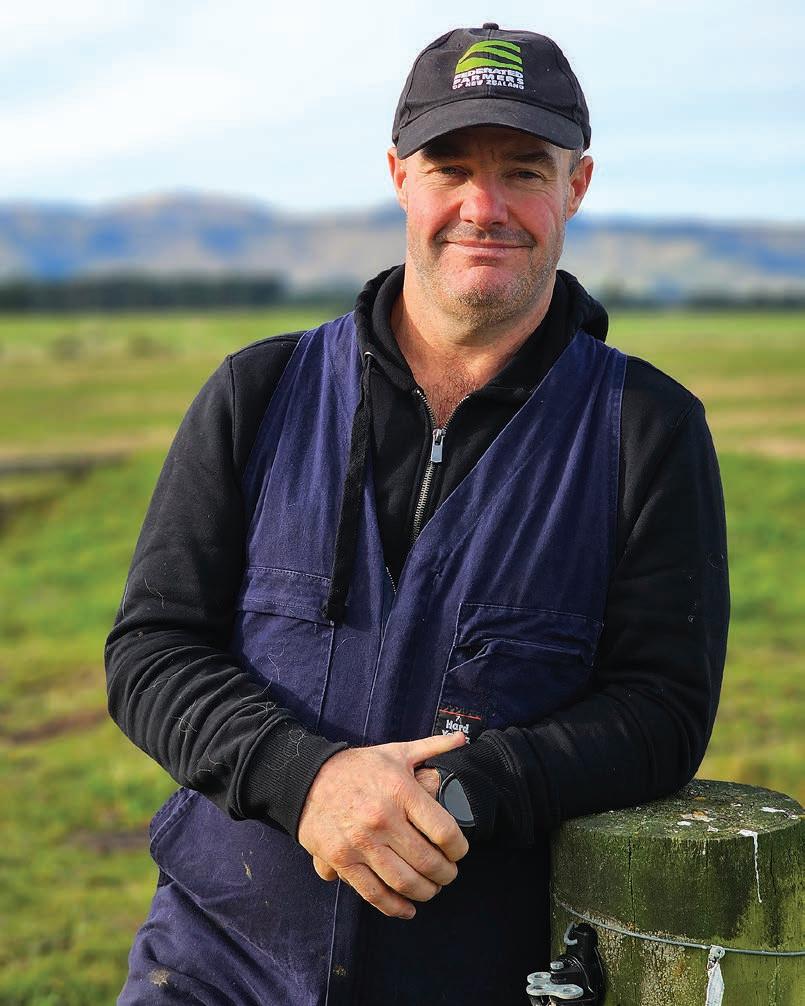
Southland Fish & Game about the proposed June 7 and 8 duck shooting competition.
“I met with their chair Dave McGregor last week and he’s really keen to jump on board to help us organise the weekend.
“It would have been good if they’d recognised the mallard problem earlier, but it’s great they seem to be finally realising we have a big issue –better late than never.
“The message about farmers’ frustrations with Southland Fish & Game seem to be sinking in and I think they’ve realised we aren’t going to walk away quietly.”
Herrick says he hopes Minister for Hunting & Fishing James Meager, who has fallen out of favour with farmers due to his mishandling of the Southland duck crisis, will also attend the event.
“Farmers are frustrated that the Minister hasn’t been taking our concerns about ducks – and Southland Fish & Game’s activism –seriously. He’s been totally missing in action on this issue.
“Meager is also the Minister for the South Island but when it comes to this issue, it feels like he thinks the South Island stops at the Waitaki River. Southland farmers’ issues are being ignored.
“I’ll be sending the Minister an invite to join me and a few local farmers in a maimai that weekend to raise our concerns, and I really hope he shows up to listen.”
MORE:
Federated Farmers Southland’s duck shooting competition will run on June 7 and 8, with more details to be released later this month.
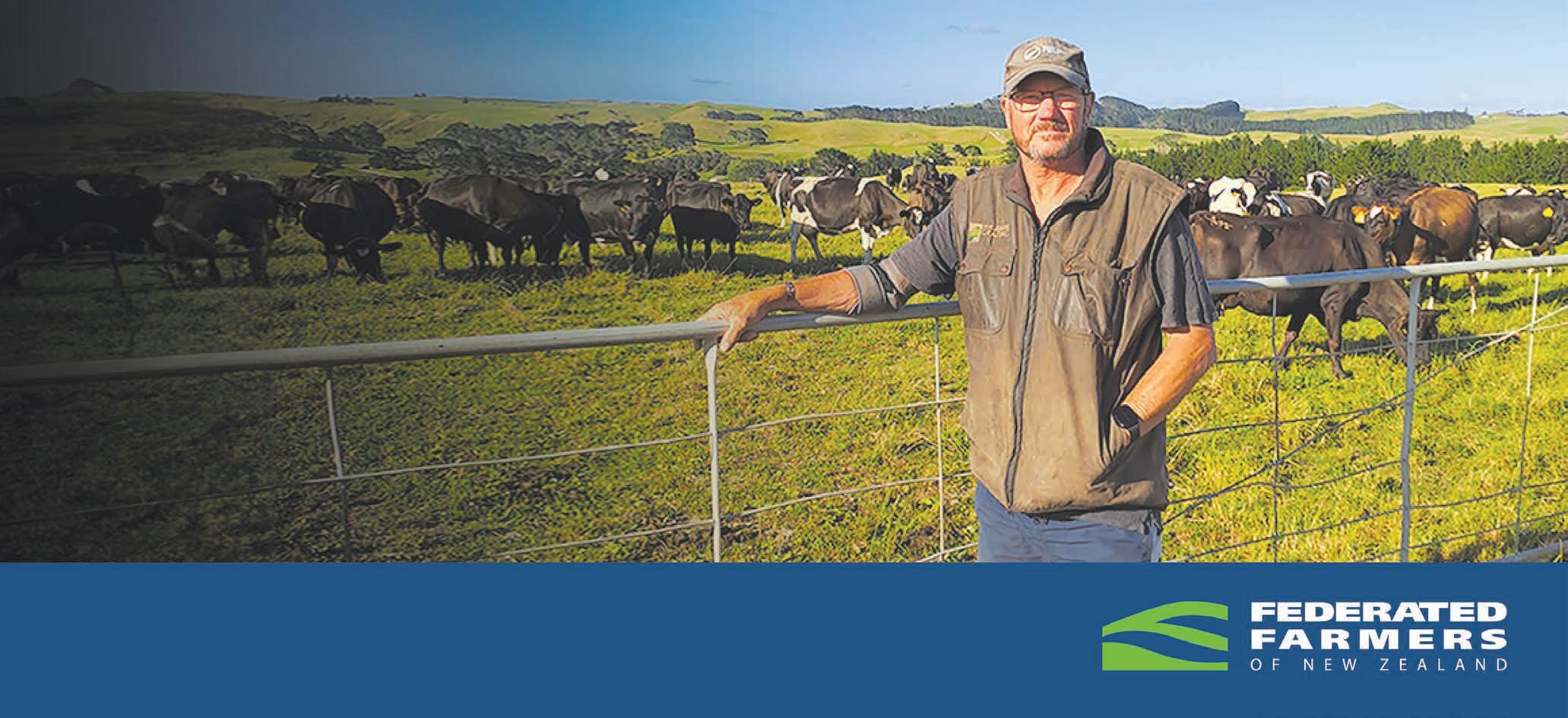
RURAL heroes who made their mark advocating for pragmatic regulation and supporting stressed-out farmers feature among PINZ 2025 finalists.
The seventh annual Primary Industries NZ Awards, with eight award categories, are a highlight of the two-day PINZ Summit taking place at Te Pae Christchurch Convention Centre 24 and 25 June.
“With tariff tit-for-tat sparking disruption and uncertainty in export markets, more than ever New Zealand needs the primary sector to be innovative and enterprising,” Federated Farmers Chief Executive Terry Copeland says.
“The PINZ Awards celebrate our primary industry movers and shakers – the science and food production teams delivering a market edge for our exported goods, the leaders who go the extra mile.”
Rural Hero finalists are (the late) Chris Allen, Neil Bateup and Ian Jury. Allen, who died in an accident on his Ashburton farm last December, gave 14 years’ service as an elected Federated Farmers leader, including eight years on the national board.
A champion of rural causes, he steered a pragmatic and balanced approach on environment and water issues, earning respect not just from farmers but from those with opposing views.
Neil Bateup helped set up the Waikato Hauraki Coromandel Rural Support Trust in 2004 and in 2017 became founding chair of the NZ RST. He’s given countless hours supporting farmers and rural families facing hard times.
The third Rural Hero finalist is Ian Jury, an 85-year-old who for 20 years has been raising money for the Taranaki rescue helicopter by collecting batteries for recycling. Four young women selected as Emerging Leader Award finalists
illustrate the depth of talent being fostered in our primary industries. Bridie Virbickas succeeded in her bid for one of the hotly-contested DairyNZ Associate director roles and followed that by joining AgRecovery as a foundation trustee.
A contract milker who has overseen expansion of her employing farm from 270 to 850
With tariff tit-fortat sparking disruption and uncertainty in export markets, more than ever New Zealand needs the primary sector to be innovative and enterprising.
Terry Copeland Federated Farmers Chief Executive
cows, she put up her hand to be Federated Farmers Bay of Plenty sharefarmer chair to ensure a voice for the district’s young farmers is at the decision-making table. Imogen Brankin has only been with Silver Fern Farms for three years but the On-Farm Sustainability Advisor has organised 60 ‘Know Your Number’ climate change workshops. She was winner of the 2022 Polson Higgs and Young Farmers Innovation Competition, speaking on the topic “Can Farming Deliver a Sustainable Future for New Zealand”, and was part of a team of five who competed in the 2023 IFAMA Global Case Study Competition.
Newly appointed Onions NZ general manager Kazi Talaska has served on the Food and Fibre Youth Council, latterly as chair, and champions vegetable industry research.
Talaska worked with industry


partners and growers to obtain $2 million in funding to set up a first-ofits-kind vegetable research farm, in Pukekohe.
The fourth Emerging Leader Award finalist is agricultural sustainability coach Lucy Brown. Through her work with the MPI-funded Integrated Farm Planning project, and in other roles, she’s found ways to show farmers sustainability is not just a theoretical concept but something that is practical and achievable.
Molesworth Station manager James (Jim) Ward is up against senior AgResearch scientists Dr Robyn Dynes and David Wheeler for the Champion Award. For nearly two decades, Ward has been a force on the Federated Farmers High Country committee and the Wilding Pine Network NZ, where he has tirelessly advocated for change, shaped policies, and driven meaningful improvements.
Starting off as farm manager at Molesworth in 2001, Ward has overcome many challenges to ensure the station remains



economically viable through a blend of pastoral farming, conservation, and recreation values – all under the microscope of the public eye. Wheeler has worked hard to bridge the gap between environmental stewardship and agricultural productivity, shaping and improving the farm management tool Overseer. Dynes, a Principal Scientist and Farmer Engagement Specialist in AgResearch, has had a highly regarded science career focused on farming systems at the interface between forage science and animal science.
Contenders in the Food, Beverage and Fibre Producer Award are Chia Sisters, who produce a gut healthsupporting drink from a golden kiwifruit probiotic, kawakawa and hail-damaged cherries, and New Image International, which exports health and beauty products to millions of people around the world.
For a full list of the 2025 PINZ finalists search ‘Brightstar + PINZ 2025 finalists’ in your web browser.
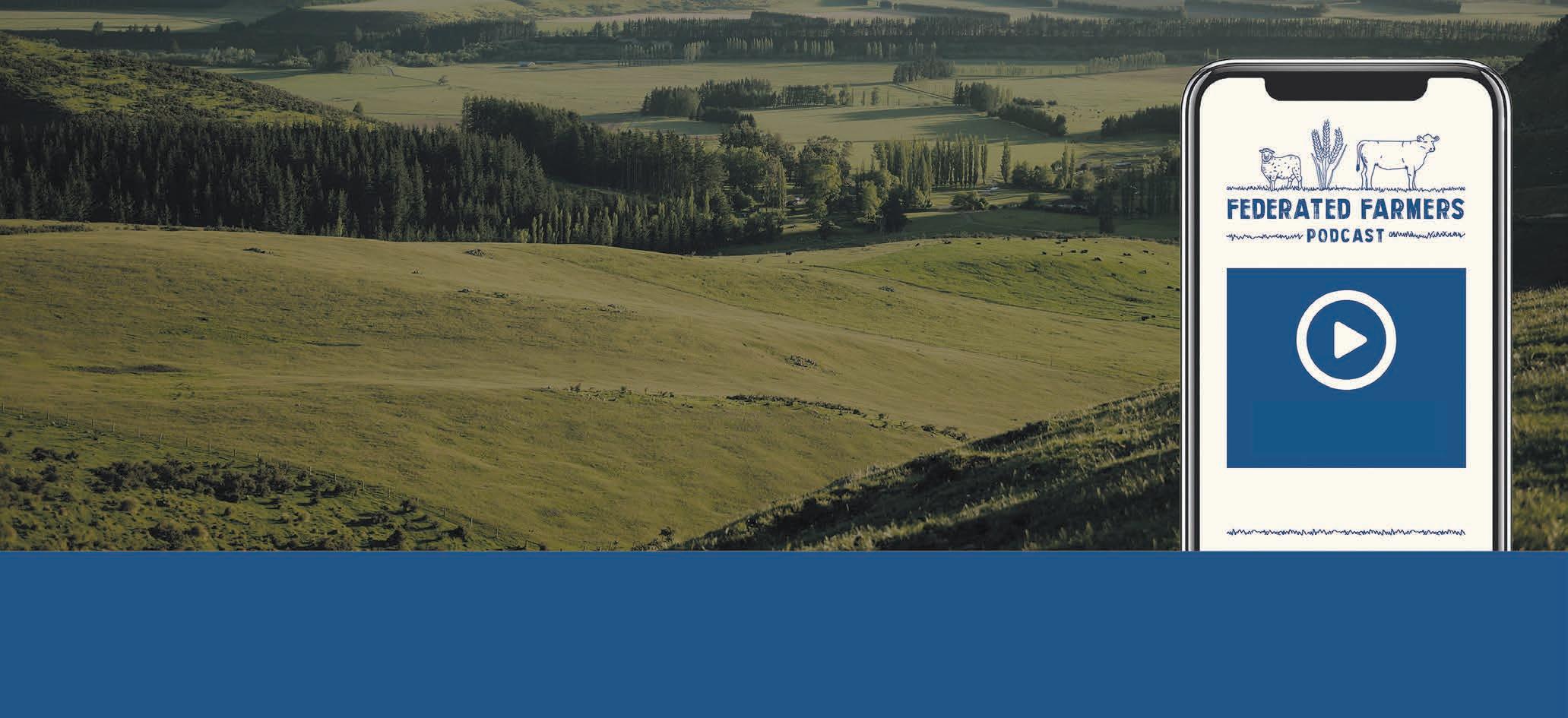

Waikato and Hauraki farmers must be front and centre in any discussions about removing flood protection and turning peat soils back into wetlands, Chris Woolerton says.
“Landowners need to be wide awake to this threat,” the newly elected Federated Farmers Waikato vice president says.
“If there’s to be a new approach to re-wetting peat soils for environmental or cost-saving reasons, farmers need to be at the table from the beginning.
“As we’ve learned with PC1, it’s much, much harder to fight impractical regulations when new policies are already well down the track – we need to be there from the outset.”
Waikato has about 94,000 hectares of peatland – about half of the nation’s total.
The idea of removing stopbanks and drains in the Lake Waikare and Whangamarino wetland catchment – infrastructure that protects around 10,600 hectares of farmland – was floated at a recent meeting
of the Lower Waikato Catchment Committee.
The committee, set up by Waikato Regional Council (WRC), comprises representatives from the council, DOC, Fish & Game, and the farming community.
Local farmer Peter Buckley, a former WRC chair, who was at the meeting, says those promoting removing flood protection argued it would extend wetland areas and improve water quality.
Peat soils also emit carbon dioxide as they dry, but that stops if they’re re-covered in water.
“Environmental benefits deserve discussion, but it’s vital that food production, farmers’ property rights, and those who paid for the flood protection infrastructure, are also part of the equation,” Buckley says.
“Re-flooding large areas would put a big hit on the local economy. There needs to be robust economic analysis of impacts.”
After three damaging floods in the area in the 1950s, the government stepped in with a catchment management plan.
“Contracts were signed and the
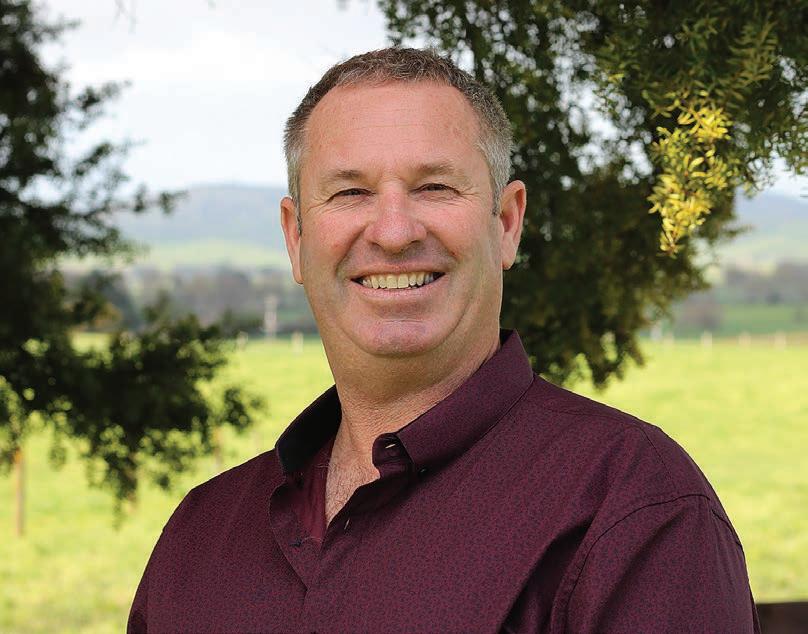
“
government offered subsidies on stop banks and flood pumps,” Buckley explains.
“That resulted in many thousands of hectares of wet or marginal land coming into full production.
“The Waikato region produces about a third of all agricultural product coming out of New Zealand and that will be affected if these peatlands are re-flooded.
“It’s also important we keep these assets that the people of New Zealand paid for.”
Flood protection and drainage capital works are paid for via targeted rates on farmers and other landowners who benefit, and they’re also rated for maintenance of that infrastructure.
“Farmers have invested heavily to improve their farms, so there needs to be compensation if there is any re-flooding,” Buckley says.
Waikare West farmer Malcolm Lumsden has direct experience of revenue and land value loss from peat soil areas of his 400ha farm becoming waterlogged.
He says long-running disputes with WRC over drain maintenance forced him to move most of his stock to higher and sandier-soil parts of his property.
From milking around 900 cows and producing 300,000kg/ms a year, he’s now down to about 600 cows and 220,000kg/ms.
“At $10 a kilogram, that’s a hell of a lot of lost revenue, never mind the loss in property value,” Lumsden says.
WRC took over drain clearance in the Waikare West district a decade ago, and Lumsden argues they’ve not only failed to do it properly, but costs have also gone through the roof.
“It only costs $3000-$4000 to clear the drains and they’ve been done three times.
“Before they took over, the Waikare scheme was $6000 in credit. I made an official information request 18 months ago and found the scheme was around $50,000 in debt, thanks

Taranaki dairy farmer
Federated Farmers sharefarmer chair


to their overheads and charges they heap on us.
“They’ve flogged us into the ground.”
Woolerton, who farms on peat soils himself, and Federated Farmers arable chair Donald Stobie, are both hearing from concerned farmers.
“They’re worried that there appears to be growing council resistance to maintaining flood protection in peatland areas to the same standards as past years,”
Woolerton says.
“A lot of the pumps and other infrastructure went in decades ago and it’s nearly the end of their useful life, despite maintenance.
“Questions are being asked at council level whether it’s worth continuing the same level of protection.
“With peat soil shrinkage, pumps need to be lowered to be effective at draining water, but farmers are striking resistance over consent to do that.”
As we’ve learned with PC1, it’s much, much harder to fight impractical regulations when new policies are already well down the track – we need to be there from the outset.
Chris Woolerton Federated Farmers Waikato vice president
Woolerton says he’s not arguing that no area should be returned to wetland.
“I’m saying we need balance, with all the pros and cons taken into account.
“We also need early dialogue between farmers, council and environmental groups.
“I don’t want to see changes snuck in without farmers having been at the table to help formulate any new approach.”


'Barclay'- Outstanding Performer
The Barclay family has been farming in the Aria district since 1932, growing their holding into the high-producing 867 hectare (more or less) farm it is today. This top-performing farm is built on hard work, fertility, and strategic selection of high-performing livestock.
• Consistent Fertiliser Applications: Never missed a year
• Outstanding weight gain on all classes of livestock
• Silage Production: On average, 400 bales made annually
Accommodation: Two dwellings - a large four-bedroom house and a three bedroom house
Farm Infrastructure: Two three-stand woolsheds and multiple farm buildings
Paddocks: Fenced into 151 paddocks
It is rare to have the opportunity to purchase a holding of this size, with the ability to winter and fatten cattle to the weights this property achieves year in and year out.
pggwre.co.nz/TEK41643

Bramerton Station
Located just 14km from Masterton on Castlepoint Road, comprising 998ha (1,004ha mapped) and offers an exceptional balance of contour, scale and infrastructure, with 280ha of cultivable flats and rolling country, with the balance mainly being medium hill, 103ha of pines (aged 3–25 years), 4ha of Redwoods, and 12ha of QEII covenant. Significant investment in fencing, tracking, fertiliser, and regrassing supports strong stock performance, running over 9,500 stock units and finishing all stock, including winter trade lambs. The homestead was fully renovated in 1998, a former House of the Year winner, boasts four large bedrooms (two with ensuites), a chef’s kitchen, openplan living, billiard room, heated pool, spa, and tennis court—all with stunning views. Two additional homes are in excellent condition; one recently renovated to executive standard. Farm infrastructure includes top-tier covered yards, a 5-stand woolshed complex covered cattle yards and laneways for efficient stock handling.
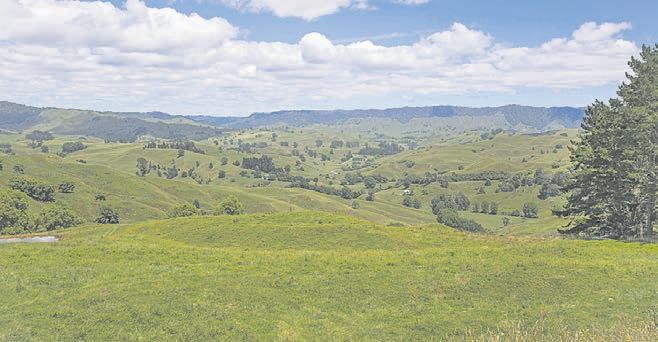

TENDER Plus GST (if any) (Unless Sold Prior)
Closes 11.00am, Thursday 19 June
VIEW 10.00-12.00pm Thursday 22 & 29 May and 05 June
Peter Wylie
M 027 473 5855
E pwylie@pggwrightson.co.nz



TENDER Plus GST (if any) (Unless Sold Prior)
Closes 2.00pm, Monday 9 June VIEW By Appointment Only
Jason Waterman
M 027 376 8313
E jason.waterman@pggwrightson.co.nz
Rob Deal
M 027 241 4775
E rob.deal@pggwrightson.co.nz


pggwre.co.nz/WPK41596

Located just minutes from Sanson and within easy reach of Feilding and Palmerston North, this 124.1476 ha (in two titles) property offers scale, versatility, and excellent infrastructure The land is flat to gently undulating with approx. 90% cultivatable, and subdivided into 30 well-fenced paddocks. Suitable for cropping, finishing, support, or breeding, it caters to both hands-on farmers and those looking to work off-farm The charming 1930s three-bedroom weatherboard home features open-plan living, plus a self-contained sleepout and outdoor entertaining area. Supported by excellent cattle yards, a two-stand woolshed, multiple implement sheds, and reliable water from two sources this property combines rural opportunity with convenience. A rare chance to secure a well-located productive unit in the heart of the Manawatu.

Limehurst - 658 ha
Offered to the market for the first time in over 100 years, Limehurst presents a rare opportunity to acquire a diverse and highly productive breeding, finishing and trading farm in a sought after location just 15 minutes east of Pahiatua. With over 70 ha of very productive flat to undulating contour which is all in superior pastures and crops coupled with balanced hill country provides an optimal farming business. Complementing Limehursts farming operation is over 80 ha of steeper hill country which was planted and registered in 2023 in a mix of pines, redwoods and native adding further revenue. Farming infrastructure is well suited to the operation and consists of a 4 stand woolshed with covered yards (900 npc), satellite yards, 2x cattle yards with load out and handling facilities, airstrip with bin and reticulated water throughout. Limehurst features 3 homes which provide ample accommodation for the operation and purchase options with one of the dwellings on a 1 ha footprint.

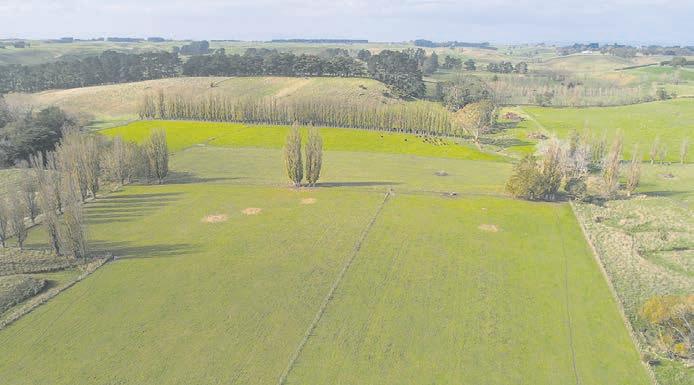
3 1
Tender closes 11.00am, Wed 11th Jun, 2025, 54 Kimbolton Road, Feilding
View Mon 19 May 11.00 - 11.30am
Web pb.co.nz/FR204486


Blair Cottrill M 027 354 5419 E blair@pb.co.nz
Ted Shannon M 021 833 536 E ted.shannon@pb.co.nz


Tender closes 2.00pm, Tue 17th Jun, 2025, Property Brokers, 129 Main Street Pahiatua View By appointment
Web pb.co.nz/PR204633


Jared Brock M 027 449 5496 E jared@pb.co.nz
Sam McNair M 027 264 0002 E sam.mcnair@pb.co.nz



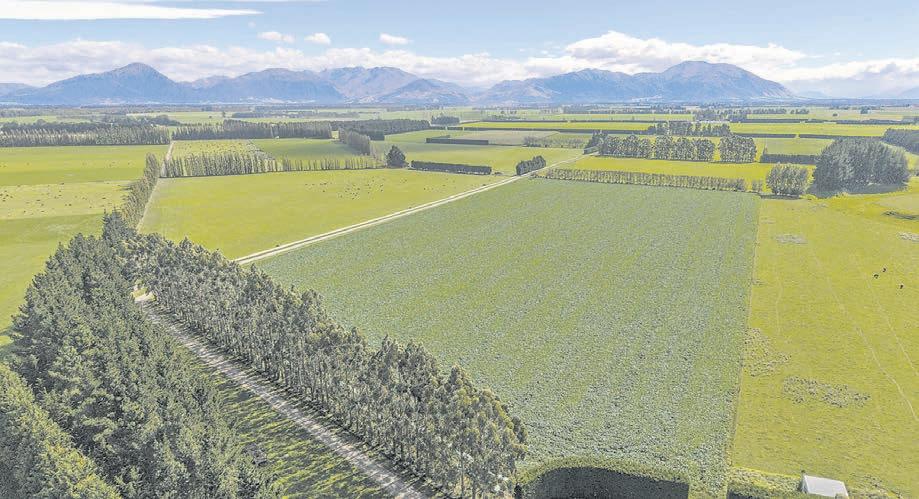













Opportunities like this donʼt come up often. You will be working alongside the farm owner and other staff. The ideal applicant will have:
• Appropriate industry experience
• Excellent communication
• A good team of dogs
• Pasture management experience
• Organisation skills
Comes with a 3-bedroom house with established gardens. 7km to Ashhurst Village (childcare centre, kindergarten, primary school. Bus to high schools)

A short 20km drive to Palmerston North. Ideal location for spouse to work off farm.
Call Willie Akers 027 460 7342 akers.will@gmail.com














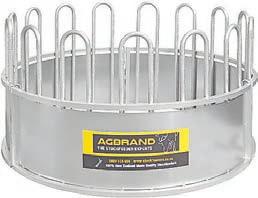













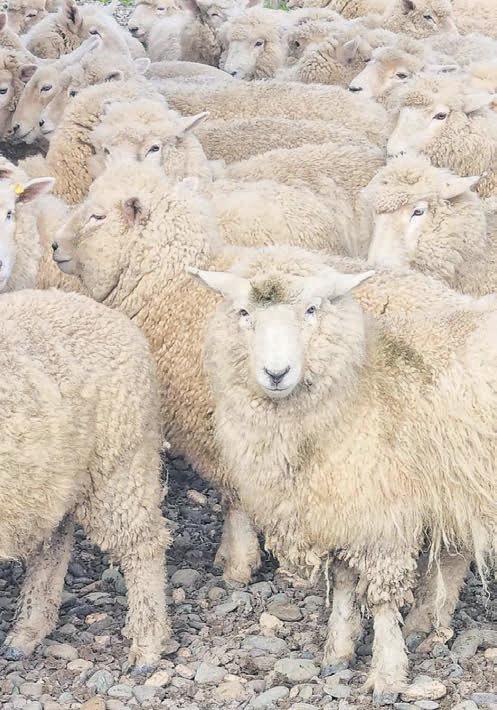






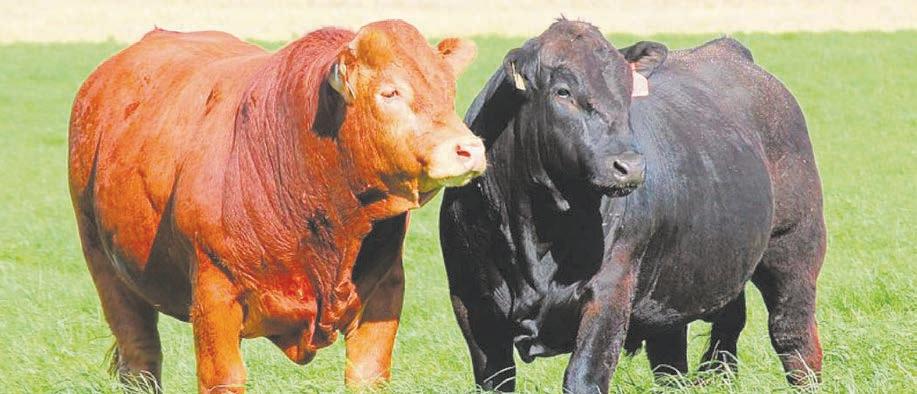





Looking down they’re wondering which river flows underneath, the first says “I’m pretty sure it’s the Mississippi River”. The other replies “no I’m almost certain it’s the Missouri River!” They go back and forth like this a bit, and after a while they realise they are both unsure.
The first village idiot gets an idea and says “you know what, I will jump down into the river, swim to the bank, and ask the first person I find which river this is, they oughta know!”
“That’s a great idea, I will wait here until you get back” says the other.
So the first village idiot jumps in, the other just waits, but hours and hours go by, until late at night, finally the first returns. His legs broken, in a wheelchair, bruised all over, arm in bandages, he slowly makes his way to the other idiot, who is shocked and asks “what the hell happened?!”
“Well,” says the first village idiot, “I found out which river it is, it’s the I-70”









Thursday 29 May 11.00am
3050 Tahuna Ohinewai Road, Tahuna
A/C Geoff & Linda Deane
Comprising
• 134 Inmilk Autumn Cows and Heifers
• 72 Spring Calving Cows and Heifers
• 14 Inmilk Empty Cows
Outstanding opportunity to buy, from a complete dispersal sale, animals with stature, capacity and production, over 45 years of ownership, breeding from the best of overseas and local sires, these include, Alcove, Einstein, Solomon, Crushabull and Sidekick Production average of 560 MS/ cow, on a system 3 5, Current SCC 85,000
Linda and Geoff have put a lifetime of work and passion into breeding cows that will shift well, put milk in the vat, look great in the paddock and have the pedigrees to match Mark this day in your diary, a day not to be missed
Hard copy of the catalogue will be available on the day or for viewing on BIDR and Agonline
Enquiries welcome
Andrew Reyland 027 223 7092
Brook Cushion 027 243 1816
Bill Moore 027 825 7505
NZ’s Virtual Saleyard bidr.co.nz























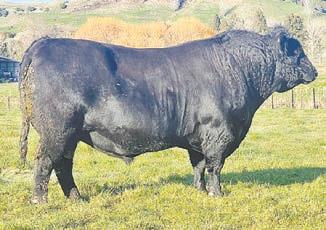














STOCK REQU IRED
Male & Ewe Lambs 32–38kg
SIL or RWR Ewes due Aug/Sept
Contracts Autumn Bull Calves 100 kg
R2YR Angus & Ang x Hfrs 330–380kg
R2YR Beef & Fries Bulls 420–560kg
VIC R2 & 3YR Ang Hfrs Due Aug/Sept
Angus Heifer Calves 170-200kg
Beef Bull Calves 220-250kg
Ross Dyer 0274 333 381


• Strong, rugged, hill country bulls for commercial farmers
• Well known for their quiet temperament, growth rates and fertility

• Ideal crossbreeding sire, maintaining maternal traits
• BVD tested and vaccinated


VIEW ONLINE AND VISIT OUR FACEBOOK PAGE FOR VIDEOS or contact Mitch Blackwood 027 496 1462 456 Te Wharau Road, RD3, Masterton • email: hinewaka@outlook.co.nz • www.hinewakashorthorns.co.nz

On Farm In-Calf Cow Sale 21st May 2025
Glen Islay, 191 Waimea Valley Road 11.00 am
COMPRISING OF APPROX:
400 m/a Hereford, Angus and Angus/Hereford cows
200 Hereford Cows
200 Angus/Angus X Cows
25 Dry Cows
50 3rd Cycle Cows
Deloraine Station, Lochindorb Runs Road, Owaka Valley - 2.00pm
COMPRISING OF APPROX:
270 m/a Angus & Angus/Hereford cows
50 Dry Cows
50 3rd Cycle Cows
Add value to your breeding programme with these quality animals.
All cattle scanned in calf early March 2025.
Hereford Sires – Limehills, Okawa, Monymusk and Orari Gorge
Angus Sires – Te Maia with Umbrella Range, Woodbank, Taimate, and Meadowslea breeding.
TB Status: C10, Vaccinations: 5 in 1 as calves and blood tested as 2 yr olds.
ENQUIRIES TO:
Matt McBain - 027 306 5807

Date: Thursday 22nd May
Address: Cambridge Sale Yards

Start Time: 11:30am will be available for online bidding
COMPRISING:
A/c Bayliss Farms Ltd
• 144 x Frsn/FrsnX In-Calf Carryover cows
• BW290 PW362 (BWs up to 441, PWs up to 842)
• DTC from 10th July to Hereford Bulls (out 10th Dec).
• Dry cow treated at drying off
• VIC prior to auction
AUCTIONEERS NOTE:
This quality line of strong Friesian, Friesian Cross carryover cows were hand-picked from selected Waikato herds. Will come forward in excellent condition. All cows guaranteed sound and in-calf by the vendor.
A/c HK McKenzie & K List
• 29 x Frsn/FrsnX in-calf Heifers
• BW292 PW278 DTC from 22/7
• 4 in-calf to AB, then run with DNA Frsn Bulls.
A/c V & J Ralph
• 8 x Frsn/FrsnX C/O cows, BW252 PW322
• DTC4/7 to Hfd bulls, 5 weeks only.
• Blanket DC & TS, VIC, TB C10
DELIVERY/PAYMENT TERMS: 14 days after the auction, Immediate delivery
CARRFIELDS LIVESTOCK AGENTS: Kelly Higgins: 027
Matt Hancock: 027 601 3787 Or your local Carrfields agent



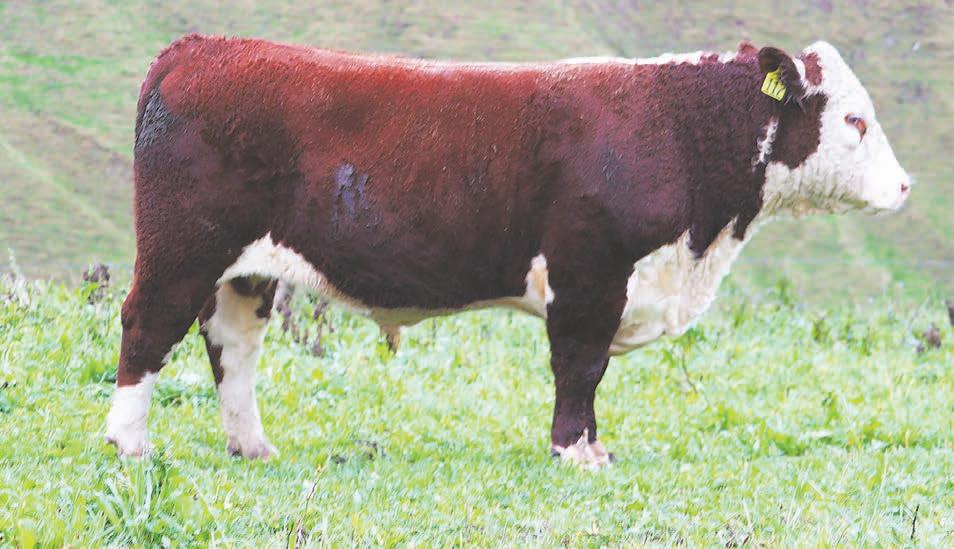










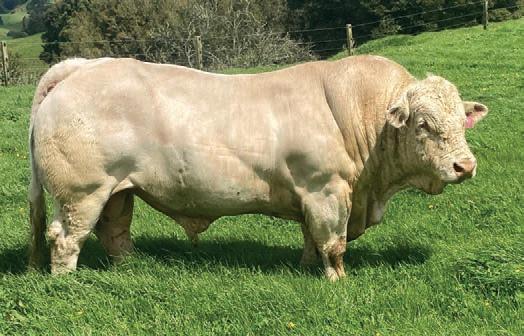



































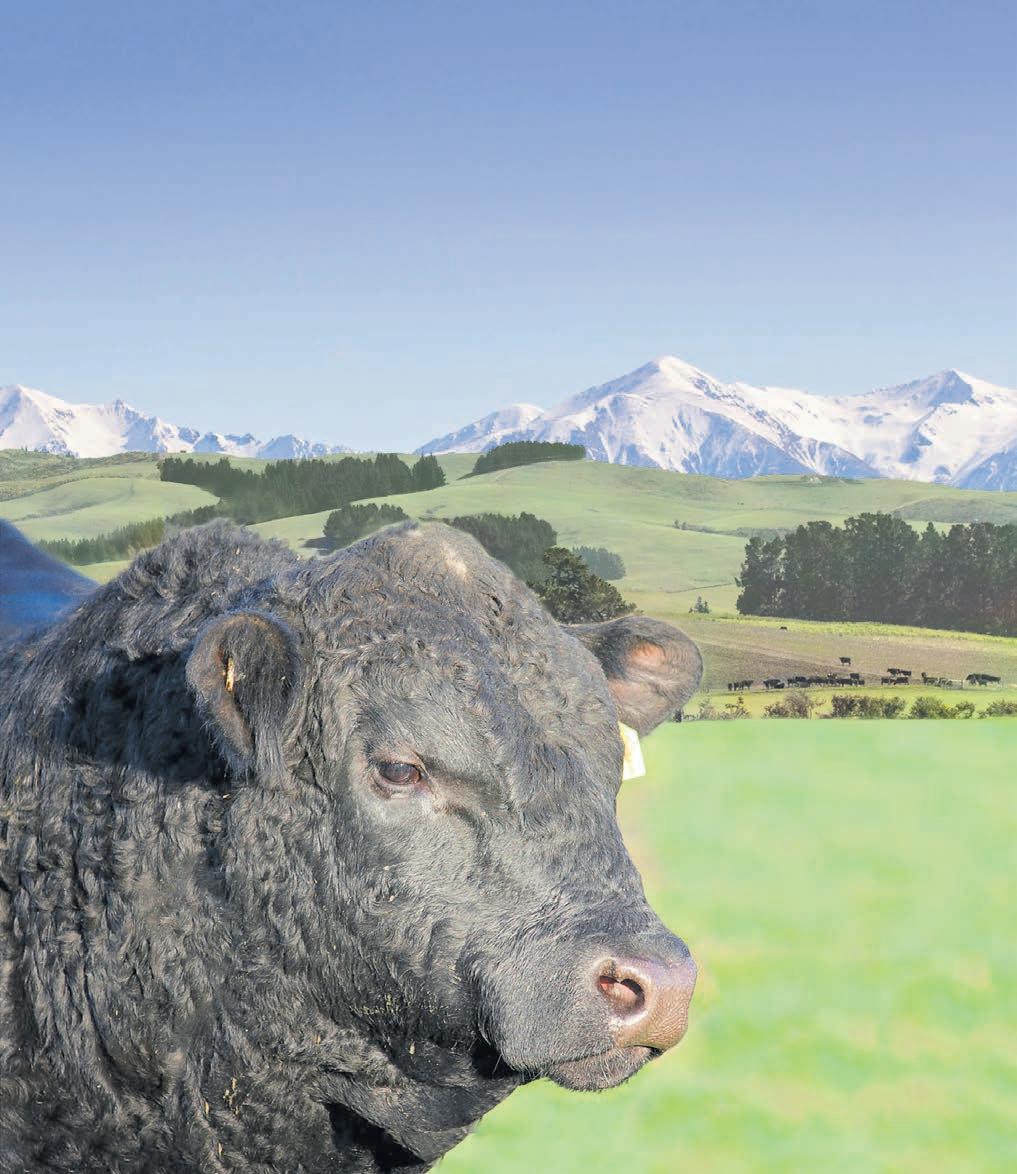

A/c J & S Webster (Waiau Trust)
29 Ohanga Road, Onaero, North Taranaki Thursday 22nd May – 11.30am
Comprising 68 High Index Dairy Cattle




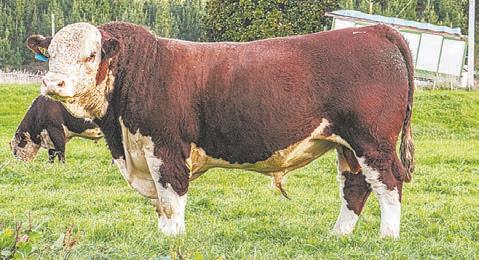



18 LIC - CRV contract mated with BWs up to 695 PWs up to 784. 2 Daughters of Syndy a dam of Kasha Krachen current BW735.
37 x Frsn & F/x Incalf Cows
D.T.C from 17.07.25 having 5 weeks AI nominated XBD & Friesian Sires.
19 x Incalf Heifers
D.T.C from 13.07.25 having 3 weeks AI nominated XBD & Friesian Sires and tailed with Jsy Bull.
7 x R1yr Heifers
4 x R1yr Breeding Bulls
110 Semen straws held at LIC (20 LIC & 90 CRV)
Will be sold in breed lots, Frsn, Frsn/x & Jsy.
1 AB 12-week bank approx 15 years.
All cattle have a C10 status & Lepto vaccinated.
Payment Terms Split 20th June & 20th October 2025 or finance available on prior arrangement.
Grazing available till 1st June 2025
All sold lots go in the draw to win a $500 voucher
For catalogues available May simon.payne@nzfll.co.nz or www.mylivestock.co.nz
Vendor Jim Webster 027 414 0563 Waiau-j@xtra.co.nz
Auctioneer Simon Payne 027 241 4585 Steve Quinnell 027 552 3514
Cowshotz Livestock & Photography Nigel Riddell 027 434 3153 www.bidr.co.nz to register online
Due to the sale of the property NZFLL has been favoured to sell the plant and sundries: 20ft Shipping container, 2006 Kubota M126XTractor, 2013 New Holland Varifeed trailer, 2013 Rata Bale Clam WBC 001, Kubota 4x4 DX 235 with front end loader and back hoe, 2014 Kuhn 8141 Pro Slinger, 2015 Rata Quick hitch 38mm, 2024 Kvernland Mower, 2024 Merlo bucket, 2024 Merlo TF50.8 170EE, 1000l colostrum tank, office equipment, calf rearing gear, chemicals, seed bags, various timber are just the tip of the iceberg. Terms: Cash, Eftpos or NZ Farmers Account
Full list of machinery
Vendor:





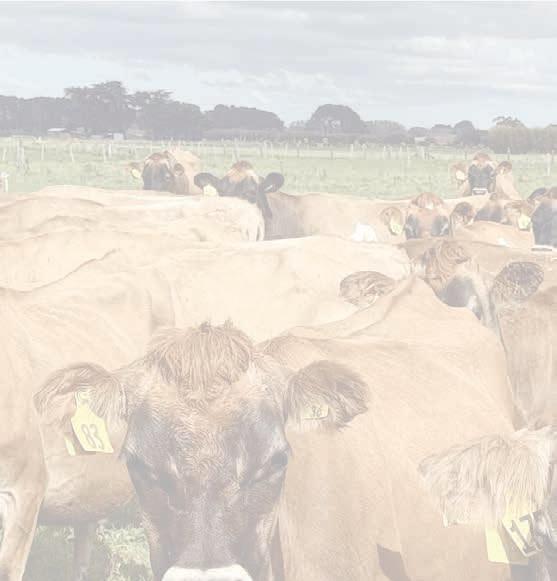
Comprising:
“NZ Farmers Livestock is pleased to offer this top end herd of Jersey cows and heifers to the market as our vendors are retiring from the dairy industry after 40 years. This herd and heifers have not been offered for sale in the paddock. This is a great opportunity to purchase some very nice cows and heifers with data to match with this herd being in the top 2-3% in NZ.”





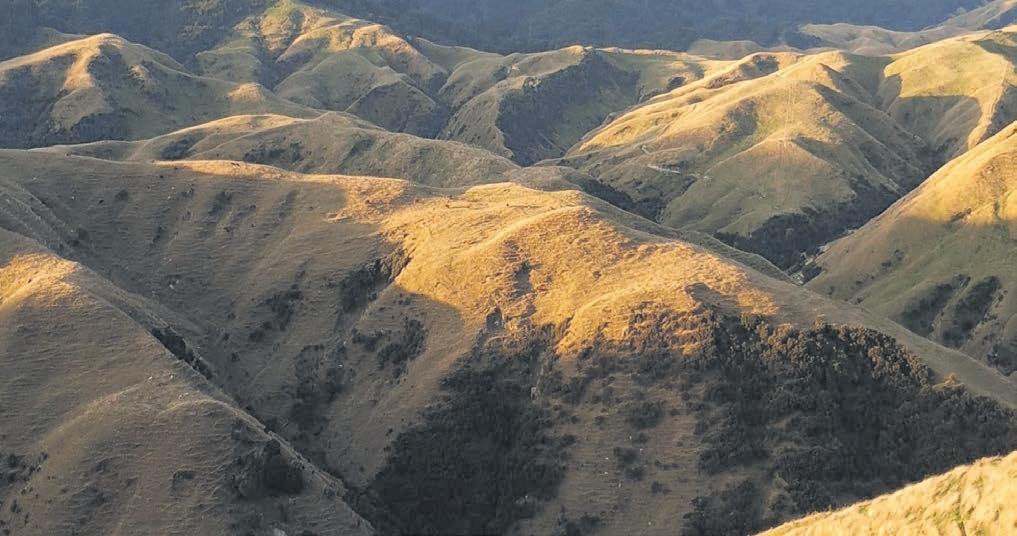


Herd details: G3 & GEv profiled and includes 97 A2A2 cows. C10 & EBL Free. Lepto Vaccinated.
SAMM Plan dry cow and all teat sealed. All cows and heifers scanned to dates.

Owner bred Jersey bulls used for NM. Calving from 24th July to 5th October.
SCC avg around 100,000 for season.
Payment & trucking:
Payment due 14 days from sale day. For clients moving farms delivery can be arranged for 1st June if required. Herd or Heifer viewing available





.co.nz

If we can strike the right balance between prices here and export returns, it will help protect prices into the new season.

CURRENT lamb prices are sitting at or just under $9/kg, but the underlying expectation is for $10/ kg to be reached at some point this season. As a result, market dynamics are rapidly changing, particularly in the North Island. The desire to cash in on this double-digit return has seen buyers confidently step into the store market to secure their needed numbers.
To do so requires deep pockets, with store lambs worth considerably more than a lamb heading to the processors 12 months ago. Back then, 18.5kgCW lambs were averaging $114-$116/ hd. Now, the general store lamb market is comfortably above $150/ hd.
The strength of the store prices reflects confidence in finished returns and the perception that store lambs will get even harder to find.
Average export values have been particularly robust this season as New Zealand exporters have swung back to take advantage of demand in our traditional lucrative markets – the European Union, United Kingdom and United States. Combined, these markets have taken 47% of our lamb exports this season. And with limited competition from Australia in Europe and the UK, NZ has been able to maximise returns. This has underpinned the strong recovery in farmgate lamb prices.
The expectation that $10/kg will be on the table within four months has traders turning their noses up at any pricing contracts falling short of this level. This is doing nothing to elevate processors’ fears of very low supply through winter, and suggests most finishers will wait to the bitter end before finishing to maximise margins and offset the high buy-in price.
But if traders are banking on $10/kg by September now, what will their spring pricing


Proudly sponsored by

benefiting from what is largely a procurement-driven spike in farmgate prices.
expectations be by July? As slaughter price continues to rise, so will store lamb values, especially if demand remains as intense as we have seen recently. This will continue to limit the flow of lambs for processing and push the procurement component too far.
Slaughter data shows that the number of lambs processed nationally in September (the expected landing point for $10/kg) equates to 5% of the total seasonal kill, about 1 million head, and has done so for many years.
Another 8% of the late-season kill occurs in October. Many view the peak spring price as a barometer for the health of the sheep industry, despite very few
As this season progresses, will we fall back into the trap of an even more aggressive procurement battle to secure a declining pool of lamb?
While these motives are effective, they are also shortsighted and mask the fundamental changes occurring in global markets. Do we want to push the farmgate prices beyond a sustainable point for such a small proportion of lamb? A push above $10/kg will be detrimental if not supported by our export returns.
And it effectively erodes processor margins and makes it harder to expand on long-term market opportunities at the expense of short-term margin recovery.
Sheepmeat production remains in decline in key markets; that’s nothing new. But at the same
time, other proteins, including beef, are struggling to show any signs of growth. These tighter supplies are meeting with a growing global consumer base that’s becoming increasingly hungry for safe, natural protein, something that NZ excels in producing.
We have already benefited this season from healthy export demand and will continue to do so if we can move past focusing on the 5% or 8% of lambs that hit the peak price and focus on the broader demand changes. Protein is a hot commodity. If we can strike the right balance between prices here and export returns, it will help protect prices into the new season and enable solid returns to be spread through the entire season.
Strengthening the overall health of the industry has got to be the goal we aim for.


These weekly saleyard results are collated by the AgriHQ LivestockEye team. Cattle weights and prices are averages and sheep prices are ranges. For more detailed results and analysis subscribe to your selection of LivestockEye reports. Scan the QR code or visit www.agrihq.co.nz/livestock-reports
| May 14 | 540
Frankton | May 13 | 789
Frankton | May 14 | 551 cattle
heifers, 204kg
Prime dairy-beef heifers, 507kg
Boner dairy cows, 463kg
Rangiuru | May 13 | 492 cattle, 119 sheep
Weaner dairy-beef
ewes, most
Te Kuiti | May 9 |
R2
Aut-born yearling dairy-beef steers, 270kg
Aut-born yearling dairy-beef heifers, 265kg
Weaner dairy-beef steers, 210kg
Take advantage of New Zealand’s most trusted independent agricultural market data reporting and analysis, with a range of insightful agriculture and forestry reports. Subscribe from only $100 per month agrihq.co.nz/our-industry-reports
Dannevirke | May 8 | 1940
Feilding | May 8
Mixed-age
Store finewool wether lambs, most
Store finewool ewe lambs, all
Prime ewes, most
Prime lambs, most
Canterbury Park | May 13 | 724 cattle, 3656 sheep

Weaner dairy-beef steers, 170kg
Prime traditional cows, 485kg
Prime dairy-beef steers, 570kg
Prime traditional heifers, 460kg
Prime dairy-beef heifers, 480kg
Store mixed-sex lambs, all
Prime ewes, most
dairy-beef heifers, 480kg
Boner
Boner Friesian cows, 545kg 2.63 Coalgate | May 8 | 410 cattle, 5673
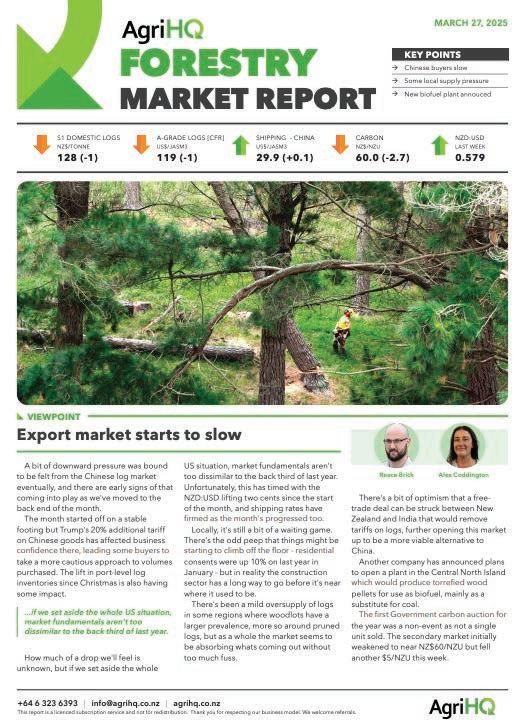

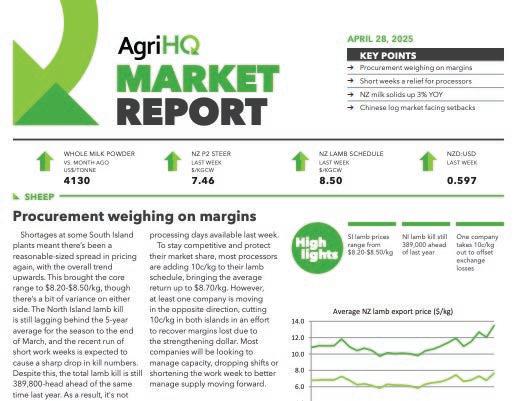







Philip Duncan NEWS Weather
ON THIS week’s weather menu we’re serving up a taster of what winter feels like – but for most regions it’s not going to linger too long, or pack too much of a hit.
Chef has designed a cold front, which Tasmania, Victoria and southeast NSW got to taste first over the past weekend. (Don’t feel like a secondary customer though – all the most powerful people have someone taste their food first in case it’s bad).
That cold front will have cleared by the time you read this, so this week kicks off with showers and cold air, along with a fresh sprinkling of snow on the Southern Alps.
But the main course this week is, yet again, a large empty plate of high pressure, serving up lighter winds for most along with generally drier skies.
For those trying to lose a little bit of water weight from the farm this may be a good week for you – but if you’re thirsty the weather
restaurant may not be good at providing more water, especially those seated in the east and north.
High pressure – another one cooked up by our Australian neighbours, and first created over the Indian Ocean – will be served to New Zealand on Wednesday, seasoned with a touch of frost through the usual places.
As far as seating is concerned, Southland and Otago may have the worst seats – next to that annoying swinging door that keeps letting in a Southern Ocean draught and a few showers to ruin your fine dining experience.
By this coming weekend Chef is changing the weather menu back to a warmer one, packed full of sub-tropical and tropical ingredients from as far away as Fiji and Samoa (as that big high pressure zone departs it drags down those warm northerlies).
This is when the bar opens and drinks pour freely with heavy downpours and maybe some spicy thunderstorm cocktails here and there again around New Zealand this coming Sunday as that sub-tropical flow clears away.
Next week there’s a special on the weather menu – a storm south of NZ coupled with our departing high may bring a surge of classic autumn nor’westers with severe gales possible (not locked in this far out, but showing up in the modelling with a storm halfway between NZ and Antarctica down to 940hPa).
This next burst of wind, rain and showers is followed by yet another huge high pressure zone out of Australia later next week – it looks as though that changeable flavour of autumn continues.
In summary, I’d give this forecast menu a 7/10 for creativity and a 7/10 for bringing the good mix of weather we need to bring variety to our nation. It’s not just one boring meal, but all sorts of different weather tastes with high pressure in the mix to digest it all well.
This set-up usually keeps the pasture growing (unless you’re high elevation) although those seated to the east of the country will be less likely to get drink service.
Overall rating: 3.5 stars. Bon appetit.



A WEEK’S WORTH: This map shows the rainfall accumulation over seven days, starting from 6am Sunday May 18 through to 6am Sunday May 25.











